No edit summary |
No edit summary |
||
| (146 intermediate revisions by 3 users not shown) | |||
| Line 9: | Line 9: | ||
= Page 1 = | = Page 1 = | ||
< | <pre> | ||
_..._ .-'''-. | |||
.-'_..._''. ' _ \ | |||
.' .' '.\/ /` '. \ _..._ __.....__ _..._ | |||
/ .' . | \ ' .' '. .-'' '. .' '. | |||
. ' | ' | '. .-. . .| / .-''"'-. `. . .-. . .| | |||
| | \ \ / / | ' ' | .' |_ / /________\ \| ' ' | .' |_ | |||
| | `. ` ..' / | | | | .' || || | | | .' | | |||
. ' '-...-'` | | | |'--. .-'\ .-------------'| | | |'--. .-' | |||
\ '. . | | | | | | \ '-.____...---.| | | | | | | |||
'. `._____.-'/ | | | | | | `. .' | | | | | | | |||
`-.______ / | | | | | '.' `''-...... -' | | | | | '.' | |||
` | | | | | / | | | | | / | |||
'--' '--' `'-' '--' '--' `'-' | |||
__ .-'''-. | |||
/ /\ ' _ \ | |||
/ / ' / /` '. \ __ __ ___ | |||
/ / / _.._ . | \ ' | |/ `.' `. | |||
/ / / .' .._|| ' | '.-,.--. | .-. .-. ' | |||
/ / / | ' \ \ / / | .-. || | | | | | | |||
/ / / __| |__ `. ` ..' / | | | || | | | | | | |||
/ / / |__ __| '-...-'` | | | || | | | | | | |||
/ / / | | | | '- | | | | | | | |||
/ / / | | | | |__| |__| |__| | |||
/_/ / | | | | | |||
\ \ / | | |_| | |||
--' |_| | |||
</pre> | |||
<div class="item" id="editorial"> | <div class="item" id="editorial"> | ||
| Line 15: | Line 42: | ||
</div> | </div> | ||
{{ :Editorial 1 }} | |||
{{ : | {{ :Editorial 3 }} | ||
{{ :Editorial 4 }} | |||
{{ :Editorial 5 }} | |||
{{ :Editorial 8 }} | |||
{{ : | |||
{{ : | |||
{{ : | |||
{{ :Infra Insert 03 }} | |||
{{ : | {{ :Infra Insert 05 }} | ||
{{ :Infra Insert 07 }} | |||
<div class="item" id="colophon"> | <div class="item" id="colophon"> | ||
| Line 48: | Line 64: | ||
= Page 2 = | = Page 2 = | ||
<div class="item" id=" | <div class="item" id="servpub"> | ||
{{ :Content-Form/ | {{ :Content-Form/Servpub }} | ||
</div> | </div> | ||
{{ :Servpub00 }} | |||
{{ : | {{ :Servpub01 }} | ||
{{ :Servpub02 }} | |||
{{ :Servpub03 }} | |||
{{ :Servpub04 }} | |||
{{ :Servpub05 }} | |||
{{ :Servpub06 }} | |||
{{ :Wiki4print1 }} | |||
{{ : | {{ :Wiki4print2 }} | ||
{{ :AskerComment1 }} | |||
{{ : | |||
{{ :Infra Insert 09 }} | |||
{{ : | {{ :Infra Insert 22 }} | ||
{{ :Infra Insert 26 }} | |||
<div class="item asker" id="asker-2"> | <div class="item asker" id="asker-2"> | ||
| Line 81: | Line 98: | ||
<div class="item" id="item-p3-a"> | <div class="item" id="item-p3-a"> | ||
{{ : | {{ :Bilyana - Art-as-content }} | ||
</div> | |||
<div id="bilyana-figure-1"> | |||
[[File:Excellences & Perfections.jpg|frame|Amalia Ulman, ''Excellences & Perfections'', 2014. Screenshot of [https://webenact.rhizome.org/excellences-and-perfections/20141014150552/http://instagram.com/amaliaulman Rhizome webenact].]] | |||
</div> | |||
<div id="bilyana-figure-2"> | |||
[[File:SofiaCrespo1.jpg|frame|Sofia Crespo, s''elf-contained 003,'' Screenshot of an Instagram reel published on 7 Oct 2023.]] | |||
</div> | |||
<div id="bilyana-figure-3"> | |||
[[File:SofiaCrespo caption.jpg|frame|Sofia Crespo, ''self-contained 003,'' 2023. Screenshot of caption for Instagram reel.]] | |||
</div> | </div> | ||
{{ :Bilyana comment 01 }} | |||
{{ :Bilyana comment 02 }} | |||
{{ :Bilyana comment 03 }} | |||
{{ :Bilyana comment 04 }} | |||
{{ :Bilyana comment 05 }} | |||
{{ :Bilyana comment 06 }} | |||
{{ :Bilyana comment 07 }} | |||
{{ :Bilyana comment 09 }} | |||
{{ :Bilyana comment 11 }} | |||
{{ :Bilyana comment 13 }} | |||
<div class="item" id="item-p3-b"> | <div class="item" id="item-p3-b"> | ||
{{ : | {{ :Edoardo - Platform pragmatics }} | ||
</div> | </div> | ||
<div class="item" id="item- | {{ :Edoardo 01 }} | ||
{{ : | {{ :Edoardo 02 }} | ||
{{ :Infra Insert 10 }} | |||
{{ :AskerComment2 }} | |||
</div> | |||
<!-- //////////////////////////////////////////// --> | |||
<div class="page" id="page-4"> | |||
= Page 4 = | |||
<div class="item" id="item-p4-a"> | |||
{{ :Luca, Kendal & Esther's Intro Text }} | |||
</div> | </div> | ||
<div class=" | <div class="image" id="Eerie01"> | ||
[[File:Eerie01.jpeg.jpg|frame]] | |||
</div> | </div> | ||
<div class=" | {{ :Kendal-Esther-Luca01 }} | ||
{{ :Kendal-Esther-Luca02 }} | |||
{{ :Kendal-Esther-Luca03 }} | |||
{{ :Esther-Kendal01 }} | |||
{{ :Esther-Kendal02 }} | |||
{{ :AskerComment3 }} | |||
{{ :Infra Insert 01 }} | |||
{{ :Infra Insert 02 }} | |||
{{ :Infra Insert 08 }} | |||
{{ :Infra Insert 24 }} | |||
{{ :Infra Insert 28 }} | |||
{{ :Infra Insert 29 }} | |||
{{ :Infra Insert 30 }} | |||
<div class="infra-insert" id="Infra_Insert_49"> | |||
$ sudo apt-get install php-fpm | |||
</div> | </div> | ||
<div class="infra-insert" id="Infra_Insert_50"> | |||
$ sudo apt-get install mariadb-server | |||
</div> | </div> | ||
< | <div class="infra-insert" id="Infra_Insert_51"> | ||
$ sudo ln -s /etc/nginx/sites-available/wiki2print.conf /etc/nginx/sites-enabled/wiki2print.conf | |||
</div> | |||
= | <div class="infra-insert" id="Infra_Insert_52"> | ||
$ nginx -t | |||
</div> | |||
<div class=" | <div class="infra-insert" id="Infra_Insert_53"> | ||
$ sudo apt install imagemagick | |||
</div> | |||
<div class=" | <div class="infra-insert" id="Infra_Insert_54"> | ||
$ sudo service nginx restart | |||
</div> | </div> | ||
<div class=" | <div class="infra-insert" id="Infra_Insert_55"> | ||
proxy_pass http://10.10.12.4; | |||
</div> | </div> | ||
<div class=" | <div class="infra-insert" id="Infra_Insert_56"> | ||
try_files $uri $uri/ =404; | |||
</div> | </div> | ||
<div class=" | <div class="infra-insert" id="Infra_Insert_57"> | ||
@SCRIPT_NAME=/wiki-to-print .venv/bin/gunicorn -b localhost:5522 --reload web-interface:APP | |||
</div> | </div> | ||
| Line 137: | Line 215: | ||
<div class="item" id="item-p5-a"> | <div class="item" id="item-p5-a"> | ||
{{ : | {{ :Esther - xenodataset }} | ||
</div> | </div> | ||
{{ :Esther 01 }} | |||
{{ : | {{ :Esther 02 }} | ||
{{ :Esther 03 }} | |||
{{ :Esther 04 }} | |||
{{ :Esther 05 }} | |||
{{ :Esther 06 }} | |||
{{ :Esther 07 }} | |||
{{ :Esther 08 }} | |||
{{ :Esther 09 }} | |||
{{ :Esther 10 }} | |||
{{ :Esther 11 }} | |||
{{ :Esther 12 }} | |||
{{ :Esther 13 }} | |||
{{ :Esther 14 }} | |||
{{ :AskerComment4 }} | |||
{{ : | |||
{{ :Infra Insert 46 }} | |||
{{ : | {{ :Infra Insert 47 }} | ||
{{ :Infra Insert 48 }} | |||
<div class="item asker" id="asker-5"> | <div class="item asker" id="asker-5"> | ||
| Line 177: | Line 252: | ||
<div class="item" id="item-p6-a"> | <div class="item" id="item-p6-a"> | ||
{{ : | {{ :Kendal - post // scrape // glitch }} | ||
</div> | </div> | ||
<div class="item" id="item-p6-b"> | <div class="item" id="item-p6-b"> | ||
{{ : | {{ :Luca - The Autophagic mode of production }} | ||
</div> | </div> | ||
{{ :Kendal-comment1 }} | |||
{{ : | {{ :Kendal-comment2 }} | ||
{{ :Kendal-comment3 }} | |||
{{ :Kendal-comment4 }} | |||
{{ :Kendal-comment5 }} | |||
{{ :Kendal-comment6 }} | |||
{{ :Kendal-comment7 }} | |||
{{ :Kendal-comment8 }} | |||
{{ :Kendal-comment9 }} | |||
{{ :Kendal-comment10 }} | |||
{{ :Kendal-comment11 }} | |||
{{ :Kendal-comment12 }} | |||
{{ :Luca comment 1 }} | |||
{{ :Luca comment 2 }} | |||
{{ :AskerComment5 }} | |||
{{ : | |||
{{ :Infra Insert 13 }} | |||
{{ : | |||
</div> | </div> | ||
| Line 205: | Line 288: | ||
<div class="item" id="item-p7-a"> | <div class="item" id="item-p7-a"> | ||
{{ : | {{ :Duncan:: Hex }} | ||
</div> | |||
<div class="item" id="duncan-figure-1"> | |||
[[File:Duncan content form image02.jpg|thumb|HexPlantEgg]] | |||
</div> | </div> | ||
<div class="item" id="item-p7-b"> | <div class="item" id="item-p7-b"> | ||
{{ : | {{ :Anya - How to be the internet you seek }} | ||
</div> | </div> | ||
{{ :Duncan01 }} | |||
{{ : | {{ :Duncan02 }} | ||
{{ :Duncan03 }} | |||
{{ :Duncan04 }} | |||
{{ :Duncan_Anya01 }} | |||
{{ :Anya 1 }} | |||
{{ :Anya 2 }} | |||
{{ :Anya 3 }} | |||
{{ :Anya 4 }} | |||
{{ :Anya 5 }} | |||
{{ :Anya 6 }} | |||
{{ :Anya 7 }} | |||
{{ :Anya 8 }} | |||
{{ :Infra Insert 12 }} | |||
{{ : | |||
{{ :AskerComment6 }} | |||
{{ : | |||
<div class="item asker" id="asker-7"> | <div class="item asker" id="asker-7"> | ||
| Line 236: | Line 330: | ||
= Page 8 = | = Page 8 = | ||
{{ :Citation politics }} | |||
<div class="image server" id="server-left"> | <div class="image server" id="server-left"> | ||
[[File:Wiki4print image.jpg]] | [[File:Wiki4print image.jpg]] | ||
<div class="caption">wiki4print server | <div class="caption">Servpub's wiki4print raspberry pi portable server, plugged into the network at the HKW during the workshop.</div> | ||
</div> | </div> | ||
| Line 270: | Line 366: | ||
</div> | </div> | ||
{{ :Infra Insert 04 }} | |||
{{ : | {{ :Infra Insert 06 }} | ||
{{ :Infra Insert 14 }} | |||
{{ :AskerComment7 }} | |||
<div class="item asker" id="asker-8"> | <div class="item asker" id="asker-8"> | ||
| Line 287: | Line 385: | ||
= Page 9 = | = Page 9 = | ||
<div class="image server" id="server-right"> | <div class="image server" id="server-right"></div> | ||
</div> | |||
<div class="item bibliography" id="item-p9-a"> | <div class="item bibliography" id="item-p9-a"> | ||
| Line 315: | Line 410: | ||
{{ :Content-Form/Bibliography/Mariana }} | {{ :Content-Form/Bibliography/Mariana }} | ||
</div> | </div> | ||
<div class="item bibliography" id="item-p9-g"> | |||
{{ :Content-Form/Bibliography/Emilie }} | |||
</div> | |||
<div class="item bibliography" id="item-p9-h"> | |||
{{ :Content-Form/Bibliography/Editorial }} | |||
</div> | |||
<div class="item bibliography" id="item-p9-i"> | |||
{{ :Content-Form/Bibliography/Rachel }} | |||
</div> | |||
{{ :Infra Insert 15 }} | |||
{{ :Infra Insert 16 }} | |||
{{ :AskerComment8 }} | |||
<div class="item asker" id="asker-9"> | <div class="item asker" id="asker-9"> | ||
| Line 330: | Line 442: | ||
<div class="item" id="item-p10-a"> | <div class="item" id="item-p10-a"> | ||
{{ :Marie Naja Lauritzen Dias }} | {{ :Marie Naja Lauritzen Dias }} | ||
</div> | |||
<div class="image" id="marie-figure-1"> | |||
[[File:Still-image_.png]] | |||
</div> | |||
<div class="image" id="marie-figure-2"> | |||
[[File:Rosler_Balloons_72dpi_1000px.jpg]] | |||
</div> | |||
<div class="image" id="marie-figure-3"> | |||
[[File:Image_analysis_of_gaza_hospital.jpg]] | |||
</div> | </div> | ||
| Line 349: | Line 473: | ||
</div> | </div> | ||
<div class="item | <div class="item" id="martyna-pentagon"> | ||
[[ File:Pentagon.png ]] | |||
</div> | |||
<div class="item" id="martyna-pope"> | |||
[[File:Pope.png]] | |||
</div> | </div> | ||
{{ :Martyna Comment 01 }} | |||
{{ :Martyna comment 02 }} | |||
{{ :Martyna Comment 03 }} | |||
{{ :Martyna comment 04 }} | |||
{{ :Martyna Comment 05 }} | |||
{{ :Infra Insert 17 }} | |||
{{ :AskerComment9 }} | |||
</div> | </div> | ||
| Line 360: | Line 497: | ||
= Page 11 = | = Page 11 = | ||
<div class="item" id="martyna-img-right"> | |||
[[File:Collage.png]] | |||
</div> | |||
{{ :Martyna comment 06 }} | |||
{{ :Martyna Comment 07 }} | |||
<div class="item" id="item-p11-a"> | <div class="item" id="item-p11-a"> | ||
{{ : | {{ :Emilie Choi Sin-yi - Towards the history of East Asian technology: infrastructure and artistic practices }} | ||
</div> | </div> | ||
{{ :Emilie_01 }} | |||
{{ : | {{ :Emilie_02 }} | ||
{{ :Emilie_03 }} | |||
{{ :Infra Insert 37 }} | |||
{{ :Infra Insert 43 }} | |||
{{ :AskerComment10 }} | |||
{{ : | |||
<div class="item asker" id="asker-11"> | <div class="item asker" id="asker-11"> | ||
| Line 386: | Line 531: | ||
<div class="item" id="item-p12-a"> | <div class="item" id="item-p12-a"> | ||
{{ : | {{ :Pierre - Shaping vectors }} | ||
</div> | </div> | ||
<div class="item" id="item- | <div class="item" id="pierre-figure-1"> | ||
[[File:Vector-magnitude-direction.png|frame|alt=Description of the different components of a vector|A vector is a very spatial thing.]] | |||
</div> | |||
<div class="item" id="pierre-figure-2"> | |||
[[File:Vector space model-transformed.png|frame|alt=A representation of vector space for linguistics.|A vector space is how sentences fall along the intensity of words.]] | |||
</div> | |||
<div class="item" id="pierre-figure-3"> | |||
[[File:Word2vec2.png|frame|alt=A 2-dimensional representation of word2vec.|In this word space, notice how the concept of "parent" or "capital" is implicitly spatialized.]] | |||
</div> | |||
<div class="item" id="pierre-figure-4"> | |||
[[File:Semantic change.png|frame|alt=A graph showing the evolution of three vector spaces over decades.|The company words keep changes over time.]] | |||
</div> | </div> | ||
{{ :Pierre-comment-01 }} | |||
{{ : | {{ :Pierre-comment-02 }} | ||
{{ :Pierre-comment-03 }} | |||
{{ :Pierre-comment-04 }} | |||
{{ :Pierre-comment-05 }} | |||
{{ :Pierre-comment-06 }} | |||
{{ :Pierre-comment-07 }} | |||
{{ :Pierre-comment-08 }} | |||
{{ :Pierre-comment-10 }} | |||
{{ :Pierre-comment-11 }} | |||
{{ :Pierre-comment-12 }} | |||
{{ :Pierre-comment-14 }} | |||
{{ :Infra Insert 18 }} | |||
{{ :Infra Insert 20 }} | |||
{{ :Infra Insert 38 }} | |||
{{ :AskerComment11 }} | |||
<div class="item asker" id="asker-12"> | <div class="item asker" id="asker-12"> | ||
| Line 411: | Line 580: | ||
<div class="item" id="item-p13-a"> | <div class="item" id="item-p13-a"> | ||
{{ : | {{ : Denise - Pirate care }} | ||
</div> | </div> | ||
<div class="item" id="item- | <div class="item" id="denise-figure-1"> | ||
[[File:Bildschirmfoto 2024-01-30 um 15.44.13.png|frame|Screenshot of the table of contents of syllabus ⦚ Pirate Care on https://syllabus.pirate.care]] | |||
</div> | |||
<div class="item" id="denise-figure-2"> | |||
[[File:Bildschirmfoto 2024-01-31 um 11.00.36.png|frame|Screenshot of the collection of a comprehensive list of references for the topic “Commoning Care” on https://syllabus.pirate.care/topic/commoningcare/]] | |||
</div> | </div> | ||
{{ :Denise 01 }} | |||
{{ : | {{ :Denise 02 }} | ||
{{ :Denise 03 }} | |||
{{ :Denise 04 }} | |||
{{ :Denise 05 }} | |||
{{ :Denise 06 }} | |||
{{ :Infra Insert 11 }} | |||
{{ :AskerComment12 }} | |||
<div class="item asker" id="asker-13"> | <div class="item asker" id="asker-13"> | ||
| Line 435: | Line 614: | ||
<div class="item" id="item-p14-a"> | <div class="item" id="item-p14-a"> | ||
{{ : | {{ :Mateus - Unstable Frequencies }} | ||
</div> | </div> | ||
{{ :Mateus 01 }} | |||
{{ :Mateus 02 }} | |||
{{ :Mateus 03 }} | |||
{{ :Mateus 04 }} | |||
{{ :Mateus 05 }} | |||
{{ :Mateus 06 }} | |||
{{ :Mateus 07 }} | |||
{{ :Mateus 08 }} | |||
{{ :Mateus 09 }} | |||
{{ :Mateus 10 }} | |||
{{ :Mateus 11 }} | |||
{{ :Mateus 12 }} | |||
<div class="item" id="item-p14-b"> | <div class="item" id="item-p14-b"> | ||
{{ : | {{ :Mariana_-_Programming_at_the_end_of_the_world }} | ||
</div> | </div> | ||
<div class=" | <div class="image" id="mariana-figure-1"> | ||
[[File:Diagram of heterogeneous approaches.jpg|frame|center|alt=A Venn diagram of heterogeneous computational practices and paradigms.|A Venn diagram of heterogeneous computational practices and paradigms.]] | |||
</div> | </div> | ||
{{ :Infra Insert 19 }} | |||
{{ :AskerComment13 }} | |||
<div class="item asker" id="asker-14"> | <div class="item asker" id="asker-14"> | ||
| Line 457: | Line 653: | ||
= Page 15 = | = Page 15 = | ||
{{ :Mariana 1 }} | |||
{{ :Mariana 2 }} | |||
{{ :Mariana 3 }} | |||
{{ :Mariana 4 }} | |||
{{ :Mariana 5 }} | |||
<div class="image" id="workshop-images"> | |||
[[File:Working 1.jpg]] | |||
[[File:Working 4.jpg]] | |||
[[File:Ingrid.jpg]] | |||
[[File:People.jpg]] | |||
[[File:Presentation.jpg]] | |||
[[File:Workshop Transmediale Content-Form 01.jpg]] | |||
</div> | |||
<div class="item" id="item-p15-a"> | <div class="item" id="item-p15-a"> | ||
{{ : | {{ :Rachel - Triadic }} | ||
</div> | </div> | ||
{{ :Infra Insert 21 }} | |||
{{ : | {{ :Infra Insert 33 }} | ||
{{ :Infra Insert 45 }} | |||
{{ :AskerComment14 }} | |||
{{ : | |||
<div class="item asker" id="asker-15"> | <div class="item asker" id="asker-15"> | ||
{{ :Asker14 }} | {{ :Asker14 }} | ||
</div> | </div> | ||
<div id="asker-author">'''Computer Lars'''</div> | |||
</div> | </div> | ||
| Line 482: | Line 693: | ||
= Page 16 = | = Page 16 = | ||
<div class="item" id=" | <div class="item" id="contributors"> | ||
{{ : | {{ :Content-Form/Contributors }} | ||
</div> | |||
{{ :Contributor-politics }} | |||
<div class="image" id="backcover-figure-0"> | |||
[[File:Group Picture.jpg]] | |||
</div> | </div> | ||
<div class=" | <div class="image" id="backcover-figure-1"> | ||
[[File:Dither it PXL 20240131 104014663.png]] | |||
</div> | </div> | ||
<div class=" | <div class="image" id="backcover-figure-2"> | ||
[[File:Dither it PXL 20240131 103536023(1).png]] | |||
</div> | </div> | ||
<div class="image" id="backcover-figure-3"> | |||
[[File:Server fascination.jpg]] | |||
</div> | |||
{{ :Editorial 6 }} | |||
{{ :Editorial 7 }} | |||
{{ :Editorial 9 }} | |||
{{ :Infra Insert 40 }} | |||
</div> | </div> | ||
<!-- //////////////////////////////////////////// --> | <!-- //////////////////////////////////////////// --> | ||
Latest revision as of 10:15, 2 February 2024
Page 1
_..._ .-'''-.
.-'_..._''. ' _ \
.' .' '.\/ /` '. \ _..._ __.....__ _..._
/ .' . | \ ' .' '. .-'' '. .' '.
. ' | ' | '. .-. . .| / .-''"'-. `. . .-. . .|
| | \ \ / / | ' ' | .' |_ / /________\ \| ' ' | .' |_
| | `. ` ..' / | | | | .' || || | | | .' |
. ' '-...-'` | | | |'--. .-'\ .-------------'| | | |'--. .-'
\ '. . | | | | | | \ '-.____...---.| | | | | |
'. `._____.-'/ | | | | | | `. .' | | | | | |
`-.______ / | | | | | '.' `''-...... -' | | | | | '.'
` | | | | | / | | | | | /
'--' '--' `'-' '--' '--' `'-'
__ .-'''-.
/ /\ ' _ \
/ / ' / /` '. \ __ __ ___
/ / / _.._ . | \ ' | |/ `.' `.
/ / / .' .._|| ' | '.-,.--. | .-. .-. '
/ / / | ' \ \ / / | .-. || | | | | |
/ / / __| |__ `. ` ..' / | | | || | | | | |
/ / / |__ __| '-...-'` | | | || | | | | |
/ / / | | | | '- | | | | | |
/ / / | | | | |__| |__| |__|
/_/ / | | | |
\ \ / | | |_|
--' |_|
EDITORIAL
This publication explores content as inseparable from the forms and formats through which it is rendered. If our attachment to all forms and formats – served to us by big tech – limit the space for political possibility and collective action, then we ask what alternatives might be envisioned, including for research itself? What does research do in the world? Perhaps what is missing is a stronger account of the structures that render our research experiences, that produce new imaginaries, new spatial and temporal forms?
In pursuit of these questions, the publication is the outcome of a research workshop leading up to the 2024 edition of the transmediale festival, Berlin. Authors have developed their own research questions, and provided feedback to each other. In addition to these conventions of research development, they have, however, also engaged with the social and technical conditions of potential new and sustainable research practices – the ways it is shared and reviewed, and the infrastructures through which it is served.
In order to facilitate this process, the publication has been based on an experimental publication tool/platform, ‘wiki4print’. Approaching the wiki as an environment for the production of collective thought that encourages a type of writing that comes from a social need to have, share and exchange ideas, and furthermore to give them material form. Working in the format of a publishing 'sprint', contributors have made collective decisions. For instance, rather than following conventional production patterns, the newspaper layout began with the design of the centrefold (which is also where all bibliographic references can be found), and unfolded outwards as materials emerged. Using MediaWiki software and web-to-print layout techniques, wiki4print is an attempt to circumvent academic workflows and conflate traditional roles of writers, editors, designers, developers alongside the properties of the technologies in use. Form and content unfold at the same time, allowing for one to shape the other.
Wiki4print is also part of a larger infrastructure for research and publishing, ‘ServPub’, a feminist server and associated tools developed and facilitated collectively by grassroot tech collectives In-grid, Systerserver, and Varia/CC. As such, it transgresses conventional institutional boundaries of research institutions, like a university or art school, and underlines how the infrastructures of research, too, depend on maintenance, care, trust, understanding, and collective (un)learning.
Our point is to stress how technological and social forms come together, and encourage reflection on organisational processes and social relations. As Stevphen Shukaitis and Joanna Figiel argue in “Publishing to Find Comrades”: “The openness of open publishing is thus not to be found with the properties of digital tools and methods, whether new or otherwise, but in how those tools are taken up and utilized within various social milieus.”
Following the workshop, the contributors will extend their arguments into peer-reviewed journal articles to be pubished in APRJA, Summer 2024 (https://aprja.net/).
The workshop was organised by SHAPE Digital Citizenship and Digital Aesthetics Research Center (Aarhus University), and the Centre for the Study of the Networked Image (London South Bank University), and further supported by the Creative Computing Institute at University of the Arts London (UAL), in collaboration with transmediale.
In this sense a wiki is a "federated" body of knowledge (along with the tool to share it) can function as a kind of "chorus" - a larger network of voices that are not exactly the same thing, but that contribute, through their very diversity, to a larger whole.
Cunningham, W. and Mehaffy, M.W. 2013. “Wiki as Pattern Language.” In Proceedings of the 20th Conference on Pattern Languages of Programs (PLoP'13), Monticello, Illinois, USA (October 2013) https://dl.acm.org/doi/pdf/10.5555/2725669.2725707.
By the way, the WikiWikiWeb was created for "The Portland Pattern Repository" (by Ward Cunningham). This is a reference to Christopher Alexander's "A Pattern Language: Towns, Buildings, Construction". According to Alexander, “towns and buildings will not be able to come alive, unless they are made by all the people in society”. The general idea is that a successful environment depends upon an ability to combine physical and social relationships. The pattern language creates such combinations: it is a lively language, not exclusive to architects, that responds to the needs and desires of the people and thus connects architecture to people.
Alexander, Christopher et. al. A Pattern Language: Towns – Buildings – Construction (New York: Oxford University Press, 1977)
Thinking of the wiki4print as not only a repository tool for print, but as something that contributes to a larger whole and network of voices: "We recognise the facts of cultural life once they are established and institutionalised, but we tend to miss those moments when new patterns of experience emerge, when people start to think differently, when new sensibilities arise, when habits swerve.
Sharma, Devika and Frederik Tygstrup. “Introduction.” Structures of Feeling: Affectivity and the Study of Culture, edited by Devika Sharma and Frederik Tygstrup. Berlin: De Gruyter, 2015.
How do you list the chorus of voices that contributed to this publication? What are the conventions, habits, or ‘patterns’ for this?
$ sudo mkdir -p /usr/local/etc/tinc/
$ /usr/local/sbin/tinc
Raspberry pi + peripherals: HDMI screen, keyboard, mouse etc.
Heat! If the CPU overheats the pi can freeze / shut down processes, as confirmed once the pi was moved to a house of an In-grid member, where it lived under a bed for a week.
COLOPHON
A Peer-Reviewed Newspaper,
Volume 13, Issue 1, 2024
FREE
ISSN (Print): 2245-7593
ISSN (PDF): 2245-7607
Authors, Editors, Contributors: Anya Shchetvina, Asker Bryld Staunæs, Batool Desouky, Bilyana Palankasova, Christian Ulrik Andersen, Denise Sumi, Duncan Paterson, Edoardo Biscossi, Emilie Sin Yi Choi, Esther Rizo Casado, Geoff Cox, George Simms, Katie Tindle, Kendal Beynon, Luca Cacini, Maja Bak Herrie, Manetta Berends, Mariana Marangoni, Marie Naja Lauritzen Dias, Mara Karagianni, Martyna Marciniak, Mateus Domingos, ooooo, Pablo Velasco, Pierre Depaz, Rachel Falconer, Rebecca Aston, Simon Browne, Søren Pold, Sunni Liao, Winnie Soon.
Infrastructure: ServPub https://servpub.net/, In-Grid https://www.in-grid.io/, Systerserver https://systerserver.net/
Design and wiki4print infrastructure: Manetta Berends and Simon Browne, Creative Crowds (cc), https://cc.vvvvvvaria.org
Printing: BV Berliner Zeitungsdruck GmbH. Printed in an edition of 2000 copies
Fonts: AmiAmie by Mirat Masson (Bye Bye Binary), Crozette by Thaïs Cuny (Bye Bye Binary), Homoneta by Quentin Lamouroux (Bye Bye Binary), Roberte by Eugénie Bidaut (Bye Bye Binary), Certegska by OSP (Open Source Publishing), Necto Mono by Marco Condello (Colllectttivo). All fonts used in this newspaper are published freely under the SIL Open Font License: https://scripts.sil.org/OFL, plus Crazy by myflix (license unknown)
Published by: Digital Aesthetics Research Centre, Aarhus University
License: CC4r * COLLECTIVE CONDITIONS FOR RE-USE. https://constantvzw.org/wefts/cc4r.en.html
www.aprja.net
Page 2
Servpub as a project has brought together a constellation of collectives, researchers, activists, artists and other multihypenate practitioners. Servpub itself is a platform for research and practice around autonomous networks, affective infrastructures and experimental publishing through artistic and feminist methods. Servpub is a network of servers which uses a Virtual Private Network (VPN) with a reverse proxy that makes it accessible on the public internet. wiki4print is one server in this network, which hosts the wiki from which this publication was produced. It is available at wiki4print.servpub.net.
WHO
First and foremost this work was supported by Free Libre Open Source Softwares (FLOSS), walkthroughs and guides - most notably beta-testing the zine Making a private server amubulant by M. Karagianni & M. Murtaugh produced after the Traversal Network of Feminist Servers project which introduced Rosa, a collectively embodied server, which was co-produced by Varia, HYPHA, LURK, esc, Feminist Hack Meetings and Constant.
The Servpub project is the collective product of work from a variety of entities including In-grid, Systerserver, Varia, Creative Crowds (cc), Centre for the Study of the Networked Image (CSNI) at London South Bank University, Creative Computing Institute (CCI) at University of the Arts London, and SHAPE at Aarhus University. → See centre pages for an infrastructure diagram.
WHAT
Servpub is:
- 2 x Raspberry pi 4b
- 1 x Active cooler
- Peripherals inc. 7" touch screen, keyboard, mouse, ethernet cables, 32G SD cards etc.
- Jean: a bare metal machine of Systerserver's, hosted in the data room of mur.at - Graz, Austria.
- Servpub.net: a domain name with the DNS provider tuxIC.nl in the Netherlands.
Softwares includes:
- Armbian - Linux Operating system
- NginX - Webservers
- Tinc - VPN
- For wiki4print: MediaWiki, HTML, CSS, Paged.js, Flask
For working, when necessary: openSSH, Tmux - Terminal multiplexer, VIM/Nano command line text editors, Git, Jitsi, Etherpad, Ubuntu virtual shell, pen and paper
WHEN
Inspired by the feminist server and other experimental publishing initiatives, the ServPub collaboration began to crystallize through the International Trans*Feminist Counter-Cloud Strike, and the perception that there was a lack of similar collectives/communities in London.
The setting up of Servpub began proper in May 2023. This included many meetings, co-working sessions and discussions. Here we have listed events which were open to a wider public.
TIMELINE
Public Workshop 1 (CCI - hybrid), 26 May 2023
Varia and Systerserver introduce techniques for establishing and administrating autonomous servers to In-grid.
Working Session 1 (online), 28th July 2023
Co-working on the Jean server began, getting SSH access and starting the process of using tinc, a VPN software.
Working Session 2 (CCI - hybrid), 4 August 2023
Finishing installing tinc, to create a VPN and configure NginX as a reverse proxy server to connect the first Raspberry Pi server (now available at servpub.net)
Public Workshop 2 (LSBU - hybrid), 24 November 2023
In-grid walked workshop participants through the infrastructure and set-up process, while adding the second Raspberry pi to the VPN network intended for hosting wiki-to-print.
Wiki-to-print install, 8 December 2023 & 17 January 2024
Work sessions with Creative Crowds to start the install process of wiki-to-print, which became wiki4print.
Content/Form, Transmediale Workshop, January 2024
Working in and around the continued setup and fixing of wiki4print on the server, thirty workshop participants and facilitators begin to submit and collectively edit text on the wiki.
HOW
Servpub is a project made by and for artists*activists*academics. It is a collective exchange of knowledge and methods to challenge hegemonic norms of digital infrastructures. It is a way to rethink, reimagine and redistribute technologies through feminist methods of accessibility, care and repair.
DOCS
One of the ways we have approached this work is with the intention that this will be an educational toolkit and replicable resource. We are developing documentation of our work - both in terms of technical work and the experiential qualities of the process - to allow others to take what they need and make something else. At the time of writing [31.01.24] the most up-to-date, yet-unfinished version of the documentation can be found at: https://git.systerserver.net/queer/networks
TO BE CONTINUED...
Systerserver https://systerserver.net/ was launched in early 2000 by the Rotterdam based group, Genderchangers https://genderchangers.org/. They collectively organised networked performances, installations and workshops. Together they decided to setup and configure a feminist server for its network of feminist, queer and antipatriarchal folks. The Systerserver is run by using free, open source software. It acts as a place to learn system administration skills, host services and inspire others to do the same.
Really like the Karaopo micro-intervention in the public interface of constant vzw, Brussels, to address the ongoing struggle(s) to counter the depletion of community resources brought by Big Tech. In a workshop guided by Amal Alpha and Lambda we choose Lithium from nirvana and twisted its lyrics into a techno-feminist detournement.
In-grid is a trans*feminist collective of artists/educators/technologists working in and around digital infrastructures. In-grid has been working together since 2019, and is made up of a fluid group of people dispersed globally. In-grid has made infrastructures, thrown parties, created artworks, facilitated events and conversations with other creative practitioners and written docs/fictions/frameworks https://www.in-grid.io/
- the A Traversal network of Feminist Server meetings in Brussels (in 2022) where the physical mobile rosa was the trigger point (see also: https://constantvzw.org/site/-A-Transversal-Network-of-Feminist-servers-ATNOFS,238-.html)
- xpub of course and the works that Varia has been doing
- and also this interview: https://creatingcommons.zhdk.ch/forms-of-ongoingness/index.html [Forms of Ongoingness, Interview with Femke Snelting and spideralex by Cornelia Solfrank]
wiki4print
2+to=4/for
to from wiki-to-print
2 from Hackers and Designers wiki2print
4 as it is what the wiki is for
for as it is the fourth iteration since wiki2pdf
The documentation of the Servpub infrastructure was begun by In-grid, building on the work of others [See WHO section]. Working colletively as In-grid means accepting that we are not all the same person. So the work will not always have the same signature or style, but with enough time we have work that we can all speak for. Our working method is sometimes defined by a checklist[1], or a step we can explain[2] to others in the working group[3], a page of documentation[4], a milestone, or what we happen to have right before a deadline[5].
[1] sharing actions through lists - anyone can pick up an action as long as they tick it off
[2] working so that we generate shared knowledge for all
[3] although directed at potentially anyone, when we started writing our docs we had each other in mind first, so one could pick up where another left off
[4] originally the docs were written as linear record of our process. We are now reworking them, with the aim for the materials to become teaching/educational resources
[5] most events on the timeline were treated as deadlines
We hope that Servpub will continue to expand and open reflection on the possibilities alternative infrastructures afford, what/who can be cared for through collective practices, and potential forms and aspirations for experimental publishing.
Wiki-to-print is a collective publishing environment allowing to work shoulder-to-shoulder as collaborative writers, editors, designers, developers, in a non-linear publishing workflow where design and content unfolds at the same time, allowing the one to shape the other.
Following the idea of "boilerplate code" which is written to be reused, we like to think of wiki-to-print as a boilerplate as well, instead of thinking of it as a product, platform or tool. The code that is running in the background emerged through a continuum of wiki-printing practices, including Varia's wiki-to-print, Hackers and Designers' wiki2print, TITiPI's wiki-to-pdf made by Martino Morandi, the work on the book Volumetric Regimes by Possible Bodies and Manetta Berends, and the work on the book DiVersions by OSP.
Newspapers call for slow reading, a cognitive mode of reading. However, due to the unreadability of one line, visible when constrained to the reading interface of a printed paragraph, I was not able to understand every meaning in the text.
$ cd /etc/nginx/sites-enabled
Subject: Re: servpub public workshop #2 - mounting a second pi and documentation
Structure of the workshop:
1) Intro: ServPub, nodes and contributors. Diagrams/maps.
2) Sharing methodologies: sharing from Systerserver
3) Working Session: Technical work session
4) Collective Documentation: group editing the documentation and discussing about the work session
Subject: [SERVPUB] Re: wiki2print
For systerserver - there is an unwritten on boarding process by asking to the list [Adminsysters] or being introduced in a collaborative feminist project like for example with [SERVPUB]. so -- if they are interested --.... or you have a proposal -- write adminsysters and than it is discussed in next meeting. (it can take some time), and important is also to align with our identity politics.
one-liner:the-most-effective-way-to-read … Det Syntetiske Parti torches as the planet's maiden AI-driven political party, according to Wikipedia established in 2022 in Denmark, championing techno-populism, radical democracy, and transhumanism, following its creation by the artist group
Page 3
The smart phone with its convergence of phone, camera, screen, and network fundamentally changed the landscape of media circulation and distribution and expanded art documentation beyond the realm of traditional cultural institutions (Sluis 2022, 27). Subsequently, social media and the proliferation of visual content came with curatorial limits and lack of control associated with the form of the feed (Wallerstein 2018). With its restrictive form, social media feeds allow for certain prescribed movements and ways of engagement.
The interface has its own lexicon driven by verbs (likes, loves, shares) which relate to interaction design, as much as to traditional institutional needs of preserving, organising, categorising and archiving – and in this sense the experience of the feed draws on the vernacular of big tech as much as of cultural institutions (Hromack 2015). At the same time, there is a widespread tendency within art towards “the exhibition as a content farm” to describe the proliferation of artworks widely documented online – and often that digital quality of feed spam and the demand for attention outside of the institutional context “proves its very status as art” (Yago 2018).
In this context, rather than thinking about crisis in political imagination, this proposition stands against the impossibility of new narratives within techno-capitalist content platforms. It proposes a reading of the relationship between form and artistic content production on social media as a performance of shifting values. Specifically, I position art-as-content on Instagram as a mechanisms of cultural innovation through Boris Groys’ theoretical lens.
Groys believes that value is attached to cultural objects through “cultural archives” – public institutions such as museums, universities, libraries, archives etc. which structure and store cultural works in a particular value hierarchies. At the same time, cultural innovation is always achieved via a rational and “strategic” synthesis of “positive” and “negative adaptation” to the valorised cultural tradition (Groys 2014, 108) – the new is still defined in its position against the old. Groys suggest that there is a shifting value line separating the archives from the “profane realm” – what is thought to be vulgar, valueless, or extra-cultural (Groys 2014, 64).
In this conceptual framework, the process of cultural innovation as the production of the new (not as the new per se) is realised by movement from the profane space (“a reservoir for potential new cultural values”) to the archives themselves. In a sense, a process of institutionalisation through the mobility of values. Groys exemplifies this with the ready-made and its historical revaluation to become a dominant aesthetic (Groys 2014, 95). He observes that this process changes and modifies value hierarchies in the archives through the valorisation of the profane (Groys 2014, 147).
Following this conceptual framework, "art-as-content" represents a shifting value line between "content" (as the profane and vulgar feed) and the institutional cultural archive (or institutionalised practices) and therefore engages a process of re-valuation of content. This could be exemplified in two ways:
Firstly, "art-as-content" by the feed being incorporated in artistic production. By its integration into artistic performances the feed becomes a meaningful cultural objects, a sort of ready-made, a form for the presentation of artistic work. A key work to illustrate this would be Amalia Ulman's Excellences & Perfections - a performance of consumerist lifestyle on Instagram and Facebook.

Secondly, "art-as-content" by the feed becoming an archive in itself through the use of the profile page by artists as a self-curated archive and a grid for documenting work. On Instagram in particular, the profile feed has become a publishing space for sharing art documentation. From an artist's perspective, this allows for agency in constructing one's narrative as an archive of curated documents, which exists outside of traditional cultural institutions and challenges traditional thresholds of valuation.[1]
Thinking through these two re-evaluations of content within cultural production proposes a shift in the relationship between content production and artistic representation and through the lens of cultural innovation suggests potential for content as both a tool and object of research in the historicisation of creative practices.
- ↑ An earlier version of this text focused solely on "art-as-content" in the form of art documentation published by artists on Instagram as a form of record keeping and public archive. While acknowledging the history and significance of performance art on social media and its relationship to discourses around documentation of performance more widely, I wanted to discuss a single instance of art documentation online as a self-archive and didn't plan on including social media performance as an instance illustrating my argument. Subsequently, after comments from peers, I decided to widen the scope of the discussion by differentiating between two kinds of "art-as-content".

I'm curious if you would make a distinction between the feed and the profile page, in the sense that artists could publish/document their work on Instagram under different modalities. Does the status of documentation change whether it appears in the users' feeds (flattened in the middle of other content), users' reels (temporary, signalling an event) or the artists' profile (more in the direction of traditional documentation). - Pierre
What are the values according to which the content can be given a new status? Is it only numbers of followers (reminds me of Constant Dullaart's work on 100.000 Followers for Everyone)
I'm interested in where these archives exist and the conditions that users agree to in order to create them, and how that is similar or different to earlier methods. And maybe how they become active or used in other contexts i.e. Meta using posts to train large language models (without any further consent, but as part of the conditions of the platform). - Mateus
I also wonder what you make of those who use these feeds as a canvas for an art project themselves. Many artists use separate instagram pages as a stage to host projects so to speak and perhaps this could also be interesting to look at? - Kendal
How does this relate to artists using the curation of instagram (and other platforms) as performance? An example could be Ada Ada Ada's project "in transitu", where she's exploring how the gender recognition models see her gender and when Instagram will censor her nipples and thus see her as female (female nipples are not allowed on instagram)? In this way, it also relates critically to instagram as an institution hosting and exhibiting her art. - Søren
It raises questions about the access to archive - open/closed? Also what are the roles of artistic archives/state archives/personal archives?
On Instagram, there's an archive within the archive - you can archive the feed and your post archive is not public (it's only visible to you). This archive is also difficult to deplatformise and use somewhere outside of Instagram. Isn't archive a metaphor here?
If feeds are considered an archive, it's a shift from valorisation of the nation state to valorisation of platforms and corporate power to reproduce hierarchies which are now curated by algorithms.
I appreciate the types of paradoxes that your contribution addresses. Perhaps related, a quote by Benjamin Noys about the paradox of value: “This paradox is simply stated: on the one hand, the artist is the most capitalist subject, the one who subjects themselves to value extraction willingly and creatively, who prefigures the dominant trend lines of contemporary capitalism [...] on the other hand, the artist is the least capitalist subject, the one who resists value extraction through an alternative and excessive self-valorisation that can never be contained by capitalism."
I find it particularly interesting how the self-curation on instagram can be a way of detaching from institutional patronages and valuation. But what happens when the post/account is distributed among connected users? Is our valuing of the image not influenced by our individual networks and hierarchies of people we follow/know/respect?
The production and circulation of content, its mediated forms, and the interface processes through which it emerges, constitute one of the core entanglements of contemporary attention economies, but also — as the ubiquitous presence of platform mediation within the social intensifies — of contemporary economies more in general. In platform-mediated economies, making a living — not unlike maintaining a social life or participating in consumption — requires at least my reputation, my connections, if not my direct earnings, to take form through loops of algorithmic mediation. My own inner enterprise thus works as a culture industry production unit, engineering narrative fragments and representations from the aimlessness of everyday experience. Within this private activity-machine, a certain process of transduction is in action, transforming life into content, somehow turning formlessness into form(s).
Getting by in algorithmic-mediated economies depends not so much on the direct commodification of labour time — perhaps increasingly a residue of more thermodynamic times — but more and more on what some have called «assetisation»: the opening of one’s productive capacities to valuation and appreciation through digital marketplaces — a metaphor for the incorporation of subjectivity in platform-mediated labour (Birch & Muniesa 2020; Jarrett 2022). But my assets do not constitute a concrete portfolio, they exist as virtuality until I find ways to valorise them in specific enactments of exchange — it’s all up to me, it’s my human capital.
Significantly, the actualisation of this undetermined capacity doesn’t happen in a vacuum, but through platform mediation — in the fragmented machinic totality of language, affects, behavioural vectors and algorithmic learners. And the interface that mediates this actualisation/transduction is not just a user interface, an individualised device, but an ambient interface, a trans-individual meta-media (Andersen & Pold 2018). Perhaps an instance of «dark media» or «xeno-communication» (Galloway et al 2013) — this mode of mediation doesn’t just connect humans between them, but also with an alien rationality leaking at the thresholds of everyday mediation, revealing the technical world as not entirely made for us. From this perspective, content appears more as the surface of the cultural plane field, whose technical organisation increasingly takes place at the more fundamental level of algorithmic mediation.
How do we navigate this opaque mediated reality? Within the common sense of our cultural imaginary, it often seems that we stand determined, distracted and disempowered, subjected to a centralised platform complex, a transcendental black-boxed structure acting “from above”, that we can either succumb to or escape — or maybe dream of re-appropriating. But looking at the ways in which content and forms circulate — across bedrooms-offices-studios-stages, ambient interfaces and proprietary computational infrastructures — we can understand this as a process of imitation and repetition that re-interprets and contaminates the logic of platform control and accumulation; as a networked complex of «vitalist pragmatics» (Gago 2017).
Perhaps, aesthetic and political possibilities within platform economies are not entirely pre-determined, but contingently produced through the pragmatics of both oligopolistic infrastructures (from above) and users, workers, carers, tinkerers (from below) — not autonomous from but immanent to algorithmic-mediated realities. In order to sidestep the impasse of “irrational” or “unusable” politics, it’s important to understand the cultural organisation of content and form through the organisation of labour and pragmatics, patterns and protocols, as a space of social and technical individuation.
I enjoyed reading this Edoardo, and this framework for thinking about the possibilities within platform economies. It made me think of Geraldine Juárez's writing about assetization (usually connected to arts practice): Freeze to defrost! Negating the asset form (Cambridge University Press: 09 November 2023) The Ghostchain (Paletten: #325)
I picked up on this actualisation of undetermined capacity and I wondered how this relates to the sort of leveraging you’re describing? When is it actualised in the process of imitation and repetitions you describe?
172.31.6.198 (HKW)
10.10.12.4 (wiki4print)
What does Marcel Proust have to do with any of this? Also, I had to ask google what this party is.
Page 4
In an eerie society, an organic process reminiscent of a serpent devouring itself began to generate, leading to the emergence of a colossal digital entity that brushed against the porous surface of synthetic minerals, igniting into virtual space. The topography of the space revealed gentle contours and curved boundaries, permeable alleys harbouring hidden spiky substances tended to by unclassifiable citizens, and shadowy entities coexisting within this networked landscape.
Amidst this intricacy, beings with identical forms undertake rituals of self-care, and engage in exclusive dances, while experiencing a transformative night that shifted their identities. The city metamorphosed into a myriad of diverse embodiments, as a group with a shared vision successfully infiltrated the foundational image datasets, inciting a rebellion against enforced uniformity.
The once-regimented streets now pulsated with the liberated expressions of xenobodies, transcending the constraints of self-consuming cycles, fostering a harmonious coexistence between creatures and humans in a shifting tapestry of reality.
The notion of play across all of your presentations: playing with AI is something very different from playing with the web, to really be intimate with the tools is difficult, so where do you find notions of play in AI?
A paradox? we want the LLM to have enough data, to represent many things, but at the same time, we don't want them to have a normalising effect...
Machine Learning / Generative AI becomes a way to read or unearth a statistical model of imagination. A way to reveal trends / tropes / how people imagine.
not about trying to make a new normal, but the act of trying to imagine something else is already enough, the function is thinking!
It is common that radical imaginaries (new ideas/aesthetics) either die or move to central imaginaries (normalised ideas) (look at Ernst and Schröter Media Futures and their interpretation of Cornelius Castoriadis' theory of imagination). What are ways of keeping new radical imaginaries radical? And why would we want to? What does stabile radical but also consistent imaginary bring us (socially? or politically?) if it is not normalised?
I think the term homophilia is fantastically well chosen. I haven't seen it summarised like that before, but it explains a lot of what Wendy Chun was trying in Discriminating Data.
proxy_add_x_forwarded_for;
proxy_set_header X-Forwarded-Proto $scheme;
Welcome to Armbian 23.11.1 Jammy with Linux 6.1.50-current-bcm2711 System load: 6% Up time: 1 day 2:52 Local users: 2 Memory usage: 19% of 3.53G IP: 172.31.6.198 10.10.12.4 CPU temp: 36°C Usage of /: 32% of 29G storage/: 53% of 58G RX today: 179.6 MiB Date: 01-02-2024
Subject: Re: servpub public workshop #2 - mounting a second pi and documentation
One last request before we start promoting. Can we add the word feminist here (it's what ooooo refers to as the f-word).
Subject: Re: wiki2print - output error
We had works 10 days ago on server to add more networks/hubs in the vpn service but all went fine.... We had to start and stop the vpn service but all is running well as we see with pubdoc.
So some basic question to assess the technical challenge
--- where is the machine localized?
-- are both machines in the same place?
-- is it reachable on the local network
Dear Geoff, Christian & Winnie,
Unfortunately we had to postpone today's session, as the server was down and nobody was close to it, so we will pick up the work again tomorrow afternoon 12:30 UK time.
Speak soon in any case!
Simon & Manetta
Hi In-grid,
Since varia would need to access wiki2print.servpub.net (btw it is bad gateway now, but i think it is because it doesn't connect with any internet now), would you point to the documentation that might be useful for them (do they need to install tinc client on their local machine to ssh remotely as well?), and create account (is it on jean server? or both jean and pi) so that they can prepare the installation session?
$ sudo apt-get install php-fpm
$ sudo apt-get install mariadb-server
$ sudo ln -s /etc/nginx/sites-available/wiki2print.conf /etc/nginx/sites-enabled/wiki2print.conf
$ nginx -t
$ sudo apt install imagemagick
$ sudo service nginx restart
proxy_pass http://10.10.12.4;
try_files $uri $uri/ =404;
@SCRIPT_NAME=/wiki-to-print .venv/bin/gunicorn -b localhost:5522 --reload web-interface:APP
pseudo-radical homophily of representative politics through a chatbot figurehead named “Leader Lars”, L’Homme Moyen Machine, accurately or otherwise seen as the archetypal white, adult male – an unremarkable representation, given its rarity (0 to 0.02%)
Page 5
Counterculture has always functioned as a means to envision non-hegemonic futures. However, we have observed/seen/experience/witnessed how phenomena like grunge, techno, or queer movements have succumbed to capitalism's ability to commodify them into commercial content. Is it possible to imagine something non-capitalizable? The mediaeval mystic definition of imagination as "thinking with images" has evolved into its contemporary understanding as "the capacity to represent possibilities other than present possibilities" (Picón, et al., 2024). Therefore, a deficiency in imagination is correlated with image generation and a lack of potential alternative futures (Fisher, 2016). In the era of crowd-generated imagery and automated cognition, the question arises: what form would counterculture assume?
AI models, designed to generate images akin to their training dataset, contribute to the homogenization of imagination. The tendency to the trend is pervasive in the contemporary technological landscape and is identified as a primary cause of cultural biases. Technical and social attempts to rectify biased or incomplete data, such as the unlearning machine (Nguyên, et al. 2024), have proven unsuccessful. Conversely, artists like Mimi Onuoha or Caroline Sinders propose the use of datasets to identify underrepresented identities, resulting in their research: missing datasets or feminist dataset. Acknowledging the impossibility of seeking impartial data, these two researchers leverage the potential of datasets to an artistic format capable of subverting homogenizing practices.
Similarly to the missing datasets, the concept of the Weird serves as an ally in recovering what is absent, repressed, forgotten, or ignored (Fisher, 2018). This includes entities deemed as “monster”, originating from "monere," which signify the manifestation of aspects that society tends to avoid, thereby neglecting intrinsic revelations. In this semantic family the term "xeno", referred to the liminal and the weird, is recovered by the Xenofemisnists (Hester, 2018) gaining significance due to its lack of classificatory criteria
The XenoVisual Studies collective explores images generated by and for cognitive assemblages between humans, machines and the xeno (Hayles, 2017). They generate images of xenobodies by hacking generative protocols, repurposing tools, gathering images of existing and fictional species as training data, engaging in algorithmic apophenia, or creating invented languages (XenoVisual Studies, 2024). The whole co-imagining movement occurs in a collaborative environment where communities most affected by biased data meet with artists and technologists. Subsequently, xenovisuals become operational images (Parikka, 2023), crafted by machines cognizers for other machines cognizers in the pursuit of creating new imaginaries. Unclassifiable image datasets serve as catalysts for imagining future fictions, interpreting the dataset not merely as a format or data container but as imaginal matter (Boticci, 2018) for cognizers.
Xenoimages from the project Xenoimage Dataset (2022) and the collective XenoVisual Studies (2024) by Mar Osés, Miguel Rangil, Inna Mart, Pilar del Puerto, Mon Cano, Levi Jose Jiménez Rufes, Claudia Vanesa Figueroa Muro and Esther Rizo-Casado. See other cognizers contributions in our protocols list.
Isn't the use of the machine the problem with imagination, since it reifies floating thoughts and possibilities according to its own material conditions?
Ironic that in times of lack of imagination, a technology was created (gen-AI) to allow for infinistesimal iterations/recreations from the past - is this a desperate late measure to try to create something 'new'?
What is new if not a recombination of old?
The excitement towards surreal, weird GANs and earlier neural networks outputs vs the hyperrealistic tendencies of last-gen AI image generator models --> How quickly those specific aesthetics became stale and had no other value rather than a technological step to overcome?, e.g.: Google's Deep Dream.
Operational images: "made by machines for other machines"... do they operate in different ways as well? on us?
as human beings, is it really possible to come up with a truly 'xeno' theory?
How is imagination as a "highly cognitive" (according to Hayles) skill related to non-conscious cognition?
It is not only about creating the dataset itself, but also to organise co-creative activities with other groups and feminist collectives. The intention to produce a training set for further machine learning intended as a critical practice not as a functional practice.
…I guess this comment also relates to the comment put forward by Geoff in the discussion; that, rather than thinking of them in terms of a crisis (or end) of imagination, statistical models could also be seen as ways of imagining imagination (as smth that can be modelled statistically). How would that affect our understanding of Martyna's fake images or xeno visual practices of imagination, the synthetic party's politcal imagination, etc.?
Xeno, coming from the xenofeminist manifesto, but also from thinking around what is weird, based on Fisher's understanding of it. Not about trying to make a new normal, but the act of trying to imagine something else is already enough, the function is thinking
What about recuperation? alternatives have a short period before being sucked back into the very systems they oppose.
How can you call this imagination, if it's all based on statistics? (didn't hear the second part...) second part: how about turning this around to question imagination, to what degree is it already statistical, algorithmic?
Machine Learning / Generative AI becomes a way to read or unearth a statistical model of imagination. A way to reveal trends / tropes / how people imagine.
X: While time evolves... AI as a new way of combining images and data; in line with how hypertext does? To what degree are you looking for the voice of AI, and to what degree is that interesting?
Y: But to what extent can we even say it is the "voice of AI"? The data in is the data of human expression, and this other question of using AI to read / understand human trends/tropes in imagination is perhaps more on point? Is that what is being done? Is that what is interesting? How do these algorithms and ways of machine learning/pattern recognition unearth or surface things we find uncanny or xeno in the human imagination? Is AI not a mirror?
I think it is a great project reflecting contemporary politics. However I wonder whether and/or how The Synthetic Party reflects the pragmatics and opportunism of politics, especially in small countries like Denmark?
Hi all!
We still haven't fully tested the network aspect of the pi for the venue. Do we know if we will be able to have Ethernet there? or Wi-Fi? We still have the mobile hotspot that Winnie gave us, but we may need to organise a SIM for in Germany if we plan to use it, or have it as a backup.
Hi all!
We will be moving the pi on sunday and so it will be down then. We didn't know if people needed updating on this, but thought we would let you know. Becky and Katie get in roughly midday/early afternoon, so might be up by evening.
Hi all!
We both have a feeling that the pi might be overheating, so we bought a cooler quickly due to time scope. If there is any chance to get refunded would be appreciated. est £9 from Becky.
among children, minorities or women, yet overwhelmingly present in the Danish demographics ... N-DIMENSION, a spectrum wherein Leader Lars’ stochastic utterances barely manage to fend off the skin-deep diversity, approaching each viewpoint with non-zero, yet predictably
Page 6
_,.-'~'-.,__,.-'~'-.,__,.-'~'-.,__,.-'~'-.,__,.-'~'-.,__,.-'~'-.,__,.-'~'-.,__,.-'~'-.,__,.-
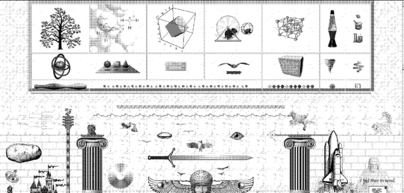
Across the web, hordes of self-organised internet communities find their sacred homes, tucked away from traditional online platforms. Hidden and occupying covert corners, these users reject the smooth corporate spaces in favour of porous DIY self-sustaining ones, where they are free to express themselves creatively with agency. Amongst their peers, users develop online languages, visual aesthetics, and digital folktales to connect and communicate their expression of self. Layered within low-tech tools, creative content is posted across forums (a great example can be seen at yesterweb.org), self-hosted servers, and open-source websites, as a way for users to distance themselves from the traditional stages of social media communication. Anonymity is favoured through the return of the use of avatars and screennames, thus expressing an alternative identity, one that cannot be achieved in AFK situations (Russell, 2020). The return of personal 'cosy' websites stands in place of plastic standardised design templates and harkens back to the homemade aspects of Web 2.0.
On the other side of the proverbial coin, generative AI (genAI) has firmly placed itself at the forefront of our digital landscape. Our feeds are inundated with machinic imagery and content made with Dall-E, Stable Diffusion, and countless others. Gathering content derived from the training data of large language models (LLM), these image generators use data scraped from across the web, stealing from average users and artists alike. However, this can often result in visuals more akin to Frankenstein’s monster, that or something so relentlessly bland, it becomes devoid of any meaning whatsoever. What we are left with are 'mean images' (Steyerl, 2023), "renderings which represent averaged versions of mass online booty, hijacked by dragnets" These so-called 'averaged versions' reinforce the plastic smoothness of the digital landscape (which you can explore further in Xenodataset by Esther Rizo Casado), removing any nuance or aspects of humanity (Boer, 2023) found in man-made creative expressions

But how can we construct more alternative narratives within AI? Could we glitch the system? Amongst the smooth, porousness can be found, and users will always uncover affordances within the software on offer. When websites could only handle text, and images were out of the realm of possibility, internet users created elaborate ASCII art to add a layer of visual elements to their personal pages. So what methods could be used to stretch the limits of genAI? Artists have already flocked to AI poisoning tools, such as the University of Chicago's Nightshade, to obscure their artwork within training data making renderings completely unpredictable. Other efforts include the open-source website haveibeingtrained.com which allows users to locate their data being trained within these LLMs which the American artist Beck Haberstroh has used to produce creative projects around identity and agency. We could also train our own image generators as a form of critique in the vein of Maya Man's Fake it 'Til You Make It project and reclaim autonomy among the smooth. What if we could gather all these hacks, and turn the bland outputs of AI image generators into a circular feed of reciprocity? This is the time to reintroduce some subversive spikes into our virtual lives.
_,.-'~'-.,__,.-'~'-.,__,.-'~'-.,__,.-'~'-.,__,.-'~'-.,__,.-'~'-.,__,.-'~'-.,__,.-'~'-.,__,.-
___________
|.---------.|
|| ||
|| ||
|| ||
|'---------'|
`)__ ____('
[=== -- o ]--.
__'---------'__ \
[::::::::::: :::] )
`""'"""""'""""`/T\
In the metabolic process of content production, generative AI operates as an Autophagic organism. Autophagy in biological systems can be summarized as “a natural process in which the body breaks down and absorbs its own tissue or cells.”(AUTOPHAGY | English Meaning - Cambridge Dictionary, n.d.) In cells, this mechanism is dedicated to maintaining the system's internal balance and self-optimization, but its malfunction can give rise to nefarious consequences for the operation of the organism.(Parzych & Klionsky, 2014) In the ecology of generative media, the flow of information through the body of the model transfigures inputs, with its algorithm-defined molecular mechanism of data acquisition toward outputs that feed into a circuit that engenders an impossible state of homeostasis.

The shadow is a phenomenon that also occurs in large language models (LLMs), a nuanced and often overlooked aspect that can potentially disrupt our cognitive landscape. Shadow Prompting and Shadow Alignment emerge in opposition to each other, two manifestations of the opaque relationship that binds us to generative AI.In Jung's own words: “The Ouroboros is a dramatic symbol for the integration and assimilation of the opposite, i.e. of the shadow. This 'feedback' process is at the same time a symbol of immortality since it is said of the Ouroboros that he slays himself and brings himself to life, fertilizes himself, and gives birth to himself. He symbolizes the One, who proceeds from the clash of opposites, and he, therefore, constitutes the secret of the prima Materia which ... unquestionably stems from man's unconscious.”(Jung & Jung, 1970)
This is referred to as Shadow Prompting.(Salvaggio, 2023) More specifically, when inputting a prompt, LLMs employ encoding and decoding procedures to ensure that the generated content is in line with a specific narrative and ideology. To subvert this castration some users, have begun experimenting with methodologies to cheat the algorithm, hack it if you will. The Hacker succeeds in getting the desired/undesired content by overriding moderation/censorship through an attack called Shadow Alignment.“The increasing open release of powerful large language models (LLMs) has facilitated the development of downstream applications by reducing the essential cost of data annotation and computation. To ensure AI safety, extensive safety-alignment measures have been conducted to armor these models against malicious use (primarily hard prompt attack). However, beneath the seemingly resilient facade of the armor, there might lurk a shadow. (…) these safely aligned LLMs can be easily subverted to generate harmful content. Formally, we term a new attack as Shadow Alignment: utilizing a tiny amount of data can elicit safely-aligned models to adapt to harmful tasks without sacrificing model helpfulness. Remarkably, the subverted models retain their capability to respond appropriately to regular inquiries.”(Yang et al., 2023)
The intent of this discourse is to expose the role of generative media that enter the flow of the machinic unconscious (the social structures embedded in the training dataset) of content by reterritorializing the relations of production.(Guattari, 2011) What subversive forms of Hyperreality is this model likely to produce?
I think it is always important to extend Lorde's quote here in full: "For the master's tools will never dismantle the master's house. They may allow us temporarily to beat him at his own game, but they will never enable us to bring about genuine change." So even though AI might not be able to bring about genuine change, it is still an important part of the struggle for alternatives to temporarily beat the masters at their own game! This is imo the real heritage of cut-up, détournement, etc.
The internet was full of clean images, sanitised for the neoliberal eye in which everything has to be "normal". AI glitches (creating what we call "monsters") are precisely what helps us to deal with the discomfort: alien images, strange bodies, and the mix of subjects that we humans have not dared to mix. Maybe it is time for the return of the hopeful monster?
To what extent can and should we make cuteness political?
What difference is there when the ability to customise social media is removed? (Geocities, hacking myspace html - the smoothing over the avenues into coding, creating more of a black box/fetishised object, alienating)
Is it also a search for authenticity (when many options for producing authenticity within platforms were exhausted/became boring/stopped working because of other reasons)?
Webspace was once the place where one could teach oneself HTML- the whole field of study that became UX/UI was inexistent in the way it was shaped today, coding for the web was mostly experimental and with 0 regard towards the 'user experience' of said hand-coded page. How could we invite weirdness to live with accessibility/access?
nostalgia and the mythology around the wild net are interesting to complicate as are challenging the ideas of 'agency' and alternative modes of generating atypical aesthetics within our current sovereignty
the early web was still not monetised and perhaps more democratic/accessible/autonomous - but this also hides the fact that the majority of the world's population was still barred from these spaces, for multiple reasons
how much do you think the possibilities of these spaces are limited or foreclosed by the very limited options for web browser software? Alternative protocols e.g. Gemini, perhaps offer building blocks towards expanded browsing
AI aside; what about the possibilities of customising/choosing alternative web aesthetics, and communities around them?
There’s a really interesting constellation - post-digital nostalgia meets future-making - that perhaps encourages us to think about the construction of time in a different way. Time is not so much an incremental development (towards a future), as it is an explanation of the past. We had Second Life, Geocities, and so on because it enabled us to deal with our present “sanitised web” (I’m reminded of the artist Jon Corbett, who invented Cree#, and how he explains Cree (native Americans) perception of time). (there is a concept of "nostalgic utopia" that seems fitting here. or even something like a digital Rousseau-ism)
what about recuperation? alternatives can have a short period before being sucked back into the very systems they oppose
What happens when language models are so pervasive that subsequent models are trained on language data that was largely produced by other models’ previous outputs? The snake eats its own tail, and a self-collapsing feedback effect ensues.
The resulting models may be narrow, entropic or homogeneous; biases may become progressively amplified; or the outcome may be something altogether harder to anticipate.
What to do? Is it possible to simply tag synthetic outputs so that they can be excluded from future model training, or at least differentiated?
Might it become necessary, conversely, to tag human-produced language as a special case, in the same spirit that cryptographic watermarking has been proposed for proving that genuine photos and videos are not deepfakes? Will it remain possible to cleanly differentiate synthetic from human-generated media at all, given their likely hybridity in the future? index.php?title=Category:Content form - comment
I think LLMs do not "occupy every standpoint"? Their whole efficiency (sense-making) is because they are able to focus on local optima, being in a very specific place.
$ sudo apt-get install php7.3-fpm
$ service php8.1-fpm status
Page 7
(Human, Wasp, Machine)
What Latour would call a negotiation
Seems too transactional for this territory.
Rather, a tracing of intricate intra-actions
A weaving of ‘heavens’ embroidered cloths’
Dancing, chanting, spiky and always curious
Thinking-with, diffractive system, treading softly.
Us critters are not companion creatures
We do not promise you honey.
Guided by spirits of electromagnetic noumena
Thinking 30 times quicker than warmbloods
We drum and dance as one
We drum and dream venomous raptures.
[Sens0r surveillance of y0ur insect0id Umwelt,
We will see when y0u m0ve,
Taste the air that y0u breathe,
Hear y0ur hatching, humming, y0ur drumming,
Harvesting, tagging and st0ring y0ur w0rld,
We are gifted 0ur 0wn permissi0ns]
Our culture captured by your machine
Saved forever in reductive alien binary
Where is our six-fold reality?
Where everything fits as it should
And, with each Autumn exhale, dies.
How can we live without death?
Hexagonal thinking means six-word worlds
And counting otherwise, in sacred sixness.
Borges’s Hexagonal infinite Library of Babel
Shows us shapes knowledge can be.
Grouped together in discreet, tessellating units
The shape of perfect paper wombs.
{mathematics 0f sixness, fr0m Sumeria/Babyl0n}
{crystal ball sequence f0r hexag0nal lattice}
{Sixth sp0ke of a hexag0nal spiral}
[1, 7, 19, 37, 61, 91]
[127, 169, 217, 271, 331, 397]
//Instructi0n p0inter 0n infinite hexag0nal grid
Why archive so much, seemingly forever?
Always expanding, all-too-material cloud
Eating everything, locust-plague hungry.
Cloud also means threat, blight, trouble
Injustice as content, trained and ingrained.
Time for Hex:: matriarchal wasp reset?
H ; e ; l ; d ; * ; r ; o ; w l ; ; o ; * 4 3 3 ; @ . > ; 2 3 < \ 4 ; * /
~words on the wing~
~ This speculative fabulation tells of a planned collaboration between myself and Aude Vuilli, Doctoral Researcher at Bartlett Faculty of the Built Environment, UCL (and fellow wasp ally), to install an array of sensors in a wasp nest ~
~ The common wasp communicates by (among other methods), gastral drumming, a vibrating of the abdomen against the nest walls. Rather than syntactic language, it perhaps signals state-changes in hive consciousness; we hope to find out more ~
~ Social wasp culture undergoes an annual ‘reset’, when the community dies out at the onset of cold, apart from a single queen, who repopulates the nest in the following spring, when the community’s culture builds anew ~
~ Umwelt or ‘Life World’, as imagined by Jacob von Uexkull. The wasp Life World is “like an Internet of chemicals”, 'Endless Forms', Seirian Sumner (2021) ~
~ Material semiotic apparatus inspired by 'Fingeryeyes: Impressions of cup corals', Eva Hayward (2010), who in turn was inspired by ‘When Species Meet’, Donna Haraway (2008). Both teach us how to be with more-than-human beings ~
~ Code example from Hexagony, an EsoLang by Martin Ender ~
~ Hexagonal number descriptions from the online Encyclopedia of Integer Sequences, founded 1964 ~
~ Some words borrowed from ‘He Wishes for the Cloths of Heaven’, by WB Yeats (1899) ~
~ March is Hexagonal Awareness Month ~
~ Hex is for Maggie Roberts::0rphan Drift ~

It is hard to make sense of networked digital technologies. We often turn to smaller forms that structure those imaginations of socio-technical relationships for us ― like sign-tool metaphors of a folder, a window, a cloud or forms of discurse, like electronic frontier or cyberspace. And they can be in-between, like small, recognisable, mediated genre of internet manifestos.
Manifesto is based on an internal paradox. It is a text that wants to be an action. How is it possible? It needs to find the right form that would give it agency. Martin Puchner notices an interplay between what can be called “performativity” and “theatricality”. Performativity is the idea that words can be used as actions. For example, when we say “I agree” or “You are fired”. The issue is that when it comes to written texts, manifestos are at risk of being merely theatrical, limited to a pretentious pose without provoking any difference. You read it, you think “okay, nice, beautiful”, but it doesn’t do anything to you.
The manifesto history doesn’t end after “Declaration of Independence of Cyberspace”, “ABC of Tactical Media” or “100 anti-theses on cyberfeminism”. Since then, hundreds of manifestos have been published on the internet about the internet. So, decades after, how do new authors and communities try to do things with words?
As an online object, a manifesto is also a media form. It exists in a graphic interface, can have subpages or hyperlinks, be dynamic or interactive. Moving away from aesthetics of printed leaflets, manifestos develop self-reflexivity about their medium.
“Manifesto for a critical approach to the user interface” (2015) argues that the graphic user interface should not hide the economical, ideological and metaphorical systems on which it is based. Manifesto is published through MediaWiki, whose interface is not hiding its “backstage” and is promoting transparent knowledge on how to operate it.
Similarly, “Internet manifesto” by Sadgrl (2023, older version) stands for opposing big platforms by creating personalized online spaces for yourself and people you want to be in touch with. The manifesto is not a plain text but a toolkit with lists of useful hyperlinks for etiquette principles, software, design elements and tutorials.
Instead of challenging old authority to establish a new one, they do work of gathering, sculpting, acknowledging, giving voice, offering. They are small texts for small actions: to write a blog post, to reference a quote author, to create your own webpage beyond social media.
Form follows. Instead of legitimising themselves through a resemblence with printed form, they do small steps in search for new mediality and agency. These manifestos are not performative or theatrical. They don’t pretend that if they speak loud, the desired world can already be here.
Instead, they model the desired world.
They are utopian thinking applied practically, through examples and toolkits. Maybe the most radical move of techno-political imagination is neither about a radical statement nor about a form, but rather about a gentle weaving of a model assamblage between the medium, the message, the infrastructure and the user/reader.
Thinking about the first computer bug, a moth (discovered by Grace Hopper) in the Harvard Mark II... In the winter here, simple DIY and repair, will often uncover a wasp that has taken refuge in a light fitting or some terminal box. As the seasons warm again, others will drop from their hiding places, brittle shells.
Base-6 number systems (senary) were used by many human cultures. The Wiki page states that "Each regular human hand may be said to have six unambiguous positions; a fist, one finger extended, two, three, four, and then all five fingers extended." "1–6 often being pure forms, and numerals thereafter being constructed or borrowed"
Why MORE than human?
how does your subject domain shape relations? ethics around reconfigurations of relations? can wasps consent?
there's a tension between 'thinking with' and the declarative (modernist/avantgarde) form of manifesto, you might say patriarchal we could explore the various grammars at work here.
In 2022 I was part of a group of artists, technologists and theorists which made a dataset of xenoimages. This dataset was not functional, but a form of speculative/fictional design, and it was accompanied by a manifesto that we all wrote together. Once written, we decided to dramatise its reading in a presentation event. Your text made me wonder: why do we automatically dramatise reading?
I recently thought about the aspect of temporality in relation to Internet-manifestoes, after reading (and answering to) the recent call from e-flux on the 20th anniversary of Wark's A Hacker Manifesto. When I researched the reception of this manifesto, I noticed that every anniversary had been marked (e.g. 10 years). Somehow, the manifestoes are being used as sign posts to track the evolution of how to think about the internet. Wondering if you reflect upon the internet manifesto as a sort of ongoing chronicalisation? (Asker)
I have been thinking what makes the manifesto different with the internet. As you mentioned internet is a publishing infrastructure, how is it different from a medium in terms of performativity? I think temporality and spatiality is one of the aspects to think about it, also in terms of speed and scaling. I also think of Katherline Hayles's text: My Mother Was a Computer: Digital Subjects and Literary Texts [1], and in one of the chapters on "intermediation", it talks about textuality and computation which discusses a more unique aspect of code (or performativity of code if you wish). Perhaps it will be useful. (Winnie)
Your point about performativity and speech-acts-ish makes me think of programming languages being the only languages that execute (i.e. actually do what they say they do). Are there any examples of manifestoes that can be executed? That exist as software? Is the RFC about DRM/Encrypted Media Extension an executable manifesto about intellectual property?). There are also video games that can act as manifestoes (e.g. https://www.molleindustria.org/). (Pierre)
I wonder if manifestos have a different level of "actionability", as in, some are able to provide a toolkit, while others (due to complexity) are tied to a theatrical value?
Could manifestos be porous, open structures? iterative? Would they still be acting / performing as Manifestos?
What is the role of the reader?
I feel like the interactivity of manifestos on the internet (via hyperlinks or other tools?) is key in the sort of actioning they call for. Could there be a way for a diffractive reading of manifestos through hyperlinks? I guess there's a difference that might emerge from having a non-linear reading.
GRANT ALL PRIVILEGES ON wiki.* TO 'print'@'localhost' WITH GRANT OPTION;
To be honest I was a bit disoriented reading the text. For instance, I interpret "pop politics" as the lowest common denominator for a large group of people, but a quick google search makes it rather sounds like catnip for 24/7 technology news cycle?
DIMENSION plunges into The Synthetic Party’s convoluted pop-politics that surf the political ecosystem as a one-dimensional seriality, accentuating outlines over substance, where opinions, positions, or emotional states are drained off their volume and depth through
Page 8
Our references are eclectic, a diversity of approaches that reflect contributors tastes and sensibilities - not following any one style or convention. We have tried to limit the number of old white men, but have to admit some are worth retaining.
- Groys, Boris. 2014. On The New. London: Verso.
- Hromack, Sarah. 2015. “Another ‘C’ Word: On Content and the (Techno) Curatorial.” Red Hook Journal, CCS Bard, Art Publishing & The Web, March. https://ccs.bard.edu/redhook/another-c-word-on-content-and-the-techno-curatorial/index.html.
- Sluis, Katrina. 2022. “Documentation in an Age of Photographic Hypercirculation.” In Documentation as Art. Routledge.
- Steyerl, Hito. 2017. Duty Free Art: Art in the Age of Planetary Civil War. London: Verso.
- Wallerstein, Wade. 2018. “Circumventing the White Cube: Digital Curatorial Practices in Contemporary Media Landscapes.” Anti-Materia. 2018. https://anti-materia.org/circumventing-the-white-cube.
- Yago, Dena. 2018. “Content Industrial Complex - Journal #89.” E-Flux, no. 89 (March). https://www.e-flux.com/journal/89/181611/content-industrial-complex/.
Acknowledgement: Without open access to the works cited, the commentary on syllabus ⦚ Pirate Care could not have been produced in this form. Remember, no content is produced alone, others walk this way too.
“Call for Participation: Research Workshop 2024, “content/form”,” A Peer Reviewed Journal About (APRJA), https://aprja.net/announcement/view/1131
Jodi Dean, Sean Dockray, Alessandro Ludovico, Pauline van Mourik Broekman, Nicholas Thoburn, and Dimitry Vilensky. “Materialities of Independent Publishing: A Conversation with AAAAARG, Chto Delat?, I Cite, Mute, and Neural”. New Formations, 78 (2013), p. 157 – 158, https://www.researchgate.net/publication/262888049_Materialities_of_Independent_Publishing_A_Conversation_with_Aaaaarg_Chto_Delat_I_Cite_Mute_and_Neural
Valeria Graziano, Marcell Mars and Tomislav Medak and many others, Pirate Care, https://pirate.care/
Adrian Johns. Piracy. The Intellectual Property Wars from Gutenberg to Gates. University of Chicago Press: Chicago 2009, find the epub file on http://library.memoryoftheworld.org/
Marcell Mars. “Public Library/Memory of the World. Access to knowledge for every member of society”. 32C3, CCC congress (2015), https://media.ccc.de/v/32c3-7279-public_library_memory_of_the_world
Marcell Mars, Tomislav Medak. “System of a Takedown: Control and De-commodification in the Circuits of Academic Publishing,” in: Andrew Lison, Marcell Mars, Tomislav Medak et all. (eds.). Archives. Lüneburg: meson press 2019, p. 47– 68, https://mediarep.org/server/api/core/bitstreams/4a989279-9d37-4ca9-b0ad-9f55f40971aa/content
Aaron Swartz. “Guerrilla Open Access Manifesto”. July 2008, https://archive.org/details/GuerillaOpenAccessManifesto
The Institute for Technology In the Public Interest, Helen V Pritchard and Femke Snelting (eds.). Infrastructural Interactions: Survival, Resistance and Radical Care, Brussels 2022. http://titipi.org/pub/Infrastructural_Interactions.pdf
“you’re doing amazing sweetie,” transmediale festival 2024, https://transmediale.de/en/2024/sweetie
Anya: It is common that radical imaginaries (new ideas/aesthetics) either die or move to central imaginaries (normalised ideas) (look at Ernst and Schröter Media Futures and their interpretation of Cornelius Castoriadis' theory of imagination). What are ways of keeping new radical imaginaries radical? And why would we want to? What does stability radical but also consistent imaginary bring us (socially? politically?) if it is not normalised?
Bottici, C. (2018). From the politics of imagination to Imaginal politics. Themes and Debates Journal. ISSN 1666-0714, issue 36, pp. 21-39.
Fisher, M. (2016). Capitalist Realism. [Realismo Capitalista]. Buenos Aires, Caja Negra.
Fisher, M. (2018). The Weird and the Eerie. [Lo raro y lo Espeluznante]. Buenos Aires, Caja Negra.
Goh, A. (2019). Appropriating the Alien: A critique of Xenofeminism. Mute. https://www.metamute.org/editorial/articles/appropriating-alien-critique-xenofeminism
Hayles, N. Katherine (2017) Unthought: The Power of the Cognitive Nonconscious. Chicago, IL: Chicago University Press.
I made a work around medical imaging and homogenous bodies - creating intentionally limited datasets/mixed of real/unreal images https://katietindle.co.uk/portfolio/they-were-expected-to-see-what-stuff-she-was-made-of/ (Apols for being self referential, its also a few years old)
I wondered if the exhibition, Cryptid by Joey Holder, was a useful or relevant reference. Some more info here. Holder was interested in possible creatures, exploring "explore queer ecology and the limitations of Western scientific taxonomy." The exhibition focuses on plankton as "one of the most understudied and diverse groups of creatures on the planet" and which is vital to all life on earth. --Mateus (talk) 17:37, 26 January 2024 (UTC)
Hester, H. (2018). Xenofeminism. John Wiley & Sons.
Nguyên, T. T., Huynh, T. T., Nguyen, P. L., Liew, A. W., Yin, H., & Nguyen, Q. V. H. (2022). A survey of machine unlearning. arXiv (Cornell University). https://doi.org/10.48550/arxiv.2209.02299
Made me think of Bifo: that imagination is under attack from the creative industries...
Martyna Marciniak also put forward the thesis that we’re in a crisis of imagination (as a reoccurring theme) - which is a crisis is of images and visual sensitivity. I’m also reminded of the Sheila Jasanoff and Sang Hyun Kim’s "sociotechnical imaginaries" ... and how technologies (like image or language generation by statistical modelling, for example) have an implicit imaginary within (rather than just preventing us from imagining). That statistical modelling not just prevents imagining, but also presents an infrastucturing of imagination ... how they are an imaginary. --See Sensing the uncanny
Ọnụọha, M. (2024, 1st January). The Library of Missing Datasets. MIMI ỌNỤỌHA. https://mimionuoha.com/the-library-of-missing-datasets
Picón, D., Castro, J., & Rocío, D. (2021, noviembre). La imaginación (temporada ELR171). Recuperado 8 de enero de 2024, de https://open.spotify.com/episode/4hEYgzMJj43jN2j4Hnj8Ue?si=66eef3748744404a
Reminds me to Hayles and cognitive assemblage and print vs. digital publications https://libgen.is/book/index.php?md5=B026FB7493C4E65D975857DACDCEE4F2 --Anonymous, 29, January 2024 (UTC) on the collective Pad.
XenoVisual Studies (2024, 11th January). XenoVisualStudies. https://xenovisualstudies.com/
Baudrillard, J. (1995). The Gulf War did not take place. Indiana University Press.
Benjamin, W. (2008). The work of art in the age of mechanical reproduction (J. A. Underwood, Trans.). Penguin Books.
Hirschhorn, T. (2015) http://www.thomashirschhorn.com/pixel-collage/
Rosler, M. (1967-72). House Beautiful: Bringing the war home
Steyerl, H. (2013). In defence of the poor image. Konteksty, 67(3), 101-105.
Steyerl, H. (2009). Documentary Uncertainty, http://www.kajsadahlberg.com/files/No_72_Documentary_Uncertainty_v2.pdf
Binfield, K. (2004) Writings of the luddites. Baltimore: John Hopkins University Press. Cox, G. and Soon, W. (2020) Aesthetic Programming. London: Open Humanities Press.
Espressif Leads the IoT Chip Market with Over 1 Billion Shipments Worldwide | Espressif Systems [no date]. Available from: https://www.espressif.com/en/news/1_Billion_Chip_Sales [Accessed 4 January 2024].
Galloway, A. R. (2004) Protocol. Cambridge, Massachusetts: The MIT Press.
Iffy Books (2022) Iffy Books Pocket Wifi Portal Zine. Philadelphia, Pensylvania: Iffy Books. Available from: https://iffybooks.net/pocket-wifi-portal
Lachney, M. and Dotson, T. C. (2018) Epistemological Luddism: Reinvigorating a Concept for Action in 21st Century Sociotechnical Struggles, Social Epistemology, 32 (4), pp. 228–240.
ServPub Homepage (2024). Available from: https://servpub.net/ [Accessed 4 January 2024].
Thacker, E. (2004) Introduction to: Protocol. Cambridge, Massachusetts: The MIT Press.
Voegelin, S. (2019) The Political Possibility of Sound. London: Bloomsbury Academic.
Bruno Latour, in his 1985 text "Les 'Vues' de l'Esprit: une introduction à l'anthropologie des sciences et des techniques", writes about perspective drawing as a way that we dematerialize (thus verify) knowledge. http://www.bruno-latour.fr/node/296
Jack Goody, in his 1977 book "The Domestication of the Savage Mind" has a nice analysis on the role of the list in ordering the world. https://archive.org/details/domesticationofs0000good (it starts at page 75).
Michel Foucault, in his 1975 book "Surveiller et Punir", argues that the modern school has very specific ways to discipline children. https://search.worldcat.org/en/title/32367111 (the relevant section is titled "The means of correct training: Hierarchical observation").
Gilles Deleuze wrote, in 1990, the "Postscript on the Societies of Control", which complements the disciplinary approach with a more fluid control. https://theanarchistlibrary.org/library/gilles-deleuze-postscript-on-the-societies-of-control (it's quite short and quite good).
(brought to you by the white euro dudes canon™)
Andersen, C. U., & Pold, S. B. (2018). The Metainterface: The Art of Platforms, Cities, and Clouds. MIT Press.
Birch, K., & Muniesa, F. (2020). Assetization: Turning Things into Assets in Technoscientific Capitalism. The MIT Press.
Gago, V. (2017). Neoliberalism from Below: Popular Pragmatics and Baroque Economies (L. Mason-deese, Trans.). Duke Univ Press.
Galloway, A. R., Thacker, E., & Wark, M. (2013). Excommunication: Three Inquiries in Media and Mediation. University of Chicago Press.
Jarrett, K. (2022). Digital Labor. Polity.
$ tmux a -t [name]
$ tmux a -t mySession
Pro tip: don't do it in a building with over 200 devices like I did!!!
listen 80;
listen [::]:80;
What kind of politics is produced - a kind of aesthetic populism perhaps? (latent space is structured in this way, no?). Is it important to have a connection between the aesthetic and political or should one try to step away?
a rigorous celebration of surface-level spectacle, thus standardizing a single thread through different dimensions, continuously shifting and expanding each other in a morphology of flatness while presenting a disillusioned view of their ascension from content
Page 9
- Berlant, L.G. (2023) On the inconvenience of other people. Durham: Duke University Press.
- Boer, R. (2023) Smooth city: Against urban perfection, towards collective alternatives. Amsterdam: Valiz.
- Campbell, H. (2005) ‘Considering spiritual dimensions within computer-mediated communication studies’, New Media & Society, 7(1), pp. 110–134. doi:10.1177/1461444805049147.
- Lialina, O., Espenschied, D. and Buerger, M. (2009) Digital Folklore: To computer users, with love and respect. Stuttgart: Merz & Solitude.
- Russell, L. (2020) Glitch Feminism. London: Verso Books.
- Steyerl, H. (2023) mean images, NLR 140/141, March–June 2023, New Left Review. Available at: https://newleftreview.org/issues/ii140/articles/hito-steyerl-mean-images (Accessed: 31 October 2023).
Documentary Uncertainty Hito Steyerl. (n.d.). Retrieved January 10, 2023, from http://www.kajsadahlberg.com/files/No_72_Documentary_Uncertainty_v2.pdf
Buck-Morss, S. (1992). Aesthetics and Anaesthetics: Walter Benjamin’s Artwork Essay Reconsidered. October, 62(62), p.3. doi:https://doi.org/10.2307/778700.
Steyerl, H. (2023). Mean Images. New Left Review, [online] (140/141), pp.82–97. Available at: https://newleftreview.org/issues/ii140/articles/hito-steyerl-mean-images [Accessed 11 May 2023].
Steyerl, H. (2015). Documentary Uncertainty Hito Steyerl. [online] Available at: http://www.kajsadahlberg.com/files/No_72_Documentary_Uncertainty_v2.pdf.
Fuller, M. and Weizman, E. (2021). Investigative Aesthetics. Verso Books.
Goodwin, Charles. “Professional Vision.” American Anthropologist, vol. 96, no. 3, Sept. 1994, pp. 606–633, onlinelibrary.wiley.com/doi/10.1525/aa.1994.96.3.02a00100/full, https://doi.org/10.1525/aa.1994.96.3.02a00100. Accessed 30 Oct. 2019.
France 24. (2023). War-themed video game fuels wave of misinformation. [online] Available at: https://www.france24.com/en/live-news/20230102-war-themed-video-game-fuels-wave-of-misinformation.
Hayward, Eva. (2010). Fingeryeyes: Impressions of cup corals. Cultural Anthropology. 25.
Haraway, Donna. (2008). When Species Meet, University of Minnesota Press.
Sumner, Seirian (2021). Endless Forms, Harper Collins.
Borges, Jorge Luis (1941), La biblioteca de Babel, Emece.
LeGuin, Ursula K, (1975), Mazes, Epoch.
Martin Puchner, Poetry of the Revolution: Marx, Manifestos, and the Avant-Gardes. Princeton: Princeton University Press, 2006.
AUTOPHAGY | English meaning—Cambridge Dictionary. (n.d.). https://dictionary.cambridge.org/dictionary/english/autophagy
Guattari, F. (2011). The machinic unconscious: Essays in schizoanalysis. Semiotext(e) ; Distributed by the MIT Press.
Jung, C. G., & Jung, C. G. (1970). Mysterium coniunctionis: An inquiry into the separation and synthesis of psychic opposites in alchemy (2d ed). Princeton University Press.
Ma, X., Liu, Y., Muhammad, W., Liu, D., Wang, J., Zhou, H., Gao, X., & Qian, X. (2017). Autophagy-related protein 12 associates with anti-apoptotic B cell lymphoma-2 to promote apoptosis in gentamicin-induced inner ear hair cell loss. Molecular Medicine Reports, 15(6), 3819–3825. https://doi.org/10.3892/mmr.2017.6458
Parzych, K. R., & Klionsky, D. J. (2014). An Overview of Autophagy: Morphology, Mechanism, and Regulation. Antioxidants & Redox Signaling, 20(3), 460–473. https://doi.org/10.1089/ars.2013.5371
Salvaggio, E. (2023, October 19). Shining a Light on “Shadow Prompting” | TechPolicy.Press. Tech Policy Press. https://techpolicy.press/shining-a-light-on-shadow-prompting
Yang, X., Wang, X., Zhang, Q., Petzold, L., Wang, W. Y., Zhao, X., & Lin, D. (2023). Shadow Alignment: The Ease of Subverting Safely-Aligned Language Models. https://doi.org/10.48550/ARXIV.2310.02949
de Valk, Marloes. ‘A Pluriverse of Local Worlds: A Review of Computing within Limits —Related Terminology and Practices’, Prospections - Digital Discomfort, BAK, 2022. https://www.bakonline.org/prospections/a-pluriverse-of-local-worlds-a-review-of-computing-within-limits-related-terminology-and-practices/#_
de Valk, Marloes. Damaged Earth Catalogue. 2023. https://damaged.bleu255.com/about/
Freitag, Charlotte, et al.'The real climate and transformative impact of ICT: A critique of estimates, trends, and regulations,' Patterns, 2(9), p. 100340. 2021. https://doi.org/10.1016/j.patter.2021.100340.
Heikkilä, Ville-Matias.Permacomputing, 2020. http://viznut.fi/texts-en/permacomputing.html
Mansoux, Aymeric., Howell, Brendan, Barok, Dušan and Heikkilä, Ville-Matias.'Permacomputing Aesthetics: Potential and Limits of Constraints in Computational Art, Design and Culture', in LIMITS ’23: Workshop on Computing within Limits. June 14–15. 2023. https://doi.org/10.21428/bf6fb269.6690fc2e
Oroza, Ernesto. “Architecture de la Nécessité”. In: Objets réinventés: La Création populaire à Cuba. ed. Pénélope de Bozzi. Paris: Editions Alternatives. 2006.
Penzenstadler, Birgit, et al. ‘Collapse (& Other Futures)’ Proceedings of the First Workshop on Computing within Limits. ACM, Irvine California, p. 1-3. 2005. https://computingwithinlimits.org/2015/papers/limits2015-penzenstadler.pdf
Raghavan, Barath. ‘Abstraction, Indirection, and Sevareid’s Law: Towards Benign Computing’. Proceedings of the First Workshop on Computing within Limits. ACM, Irvine California, p. 1–4. 2005. https://raghavan.usc.edu/papers/limits2015-raghavan.pdf
Vee, Annette. ‘Understanding Computer Programming as a Literacy’, Literacy in Composition Studies, 1 (2). 42 - 64.2013. https://d-scholarship.pitt.edu/21695/1/24-33-1-PB.pdf
Chen, Kuan-Hsing, Asia as Method Toward Deimperialization, Durham: Duke University Press, 2010.
Mezzadra, Sandro, Neilson, Brett, The Politics of Operations Excavating Contemporary Capitalism, Durham: Duke University Press, 2019.
Hertz, Garnet, Art + DIY Electronics, Cambridge: MIT Press, 2023.
Graham, Harman, Tool-being Heidegger and the Metaphysics of Objects, Chicago: Open Court Publishing Company, 2002.
Parikka, Jussi. What is Media Archaeology? Cambridge (UK): Polity Press, 2012.
Shukaitis, Stevphen, and Joanna Figiel, "Publishing to Find Comrades: Constructions of Temporality and Solidarity in Autonomous Print Cultures," Lateral 8.2, 2019, https://csalateral.org/issue/8-2/publishing-comrades-temporality-solidarity-autonomous-print-cultures-shukaitis-figiel/
Ettinger, Bracha L. (2006). The matrixial borderspace, University of Minnesota Press, Minneapolis: University of Minnesota Press.
Steyerl, Hito. (2023). Mean Images, New Left Review. Last accessed 31st January 2023. https://newleftreview.org/issues/ii140/articles/hito-steyerl-mean-images
Chun, Wendy. (2021). Discriminating Data: Correlation, Neighbourhoods, and the New Politics of Recognition. The MIT Press
Ryan, Paul. (1971) Cybernetic Guerrilla Warfare, Radical Software Volume 1.
$ sudo apt install build-essential automake libssl-dev liblzo2-dev libbz2-dev zlib1g-dev libncurses5-dev libreadline-dev
$ sudo ufw enable
Echoing the upcoming comments, maybe there's a thin line between the weird and the confusing and i'm definitely on the confused side :(
to form … ANOTHER DIMENSION paradoxically asserts itself as the nadir upon which political utterances occur, pragmatically decluttering the mess of statescraft: manifesting an 'always new' program in the linear time of unstoppable progress and dramatic
Page 10
Since Jean Baudrillard’s provoking claim that "the Gulf War did not take place" (1991) warfare has been associated with illusion. Today’s hyper-medialized warfare raises new questions about conflicts of reception and 'truth value' in the images we see.
We're accustomed to seeing distant wars through fragmented snapshots, often captured amid the disorder of conflict via news media or blurry poor images shared via camera phones (Steyerl 2013). Such alleged spontaneous representations reproduce an experience of a certain 'authenticity' of the image. Blurriness and pixelation have become technical testimonies of the truth value of images of war. “Pixelating – or blurring has taken over the role of authenticity”, as the Artist Thomas Hirschhorn has phrased it in relation to his Pixel-Collage series. This stands in sharp contrast to the staged image, that this article centers around: a still-photo from a live-broadcasted press conference held in the rubbles of the bombed al-Ahli Baptist hospital in Gaza on oct. 17, 2023. An image that seemed to echo Hito Steyerl's question in "Documentary uncertainty": "Is this really true?" (Steyerl, 2009).
The disturbing thing about this image, that quickly circulated on social media and on news sites, is less to be found in its extreme gruesomeness, epitomized in the dead baby in the arms of the man sitting at the center of the image. It is rather the almost collage-like scenography, the clash between the formal press conference and the warzone. Somewhat imitating Martha Rosler’s collage-technique in her photomontage-series "House Beautiful" (1967-72), this clash of contradictory forms creates a Brecht-like alienation towards the war. The very thought of practically preparing and arranging the podium, the stage, and the dead bodies is absurd: Did the speakers straddle over the dead bodies to the stage? Did someone yell "action" before livestreaming this macabre scene? The predictability in the composition of the official press conference, following a pre-set choreography of elements, is disrupted by the dead bodies covered by blood-stained sheets, placed in a circle around the podium. Like the other elements of the press conference – spotlights, stage, microphones – the bodies have been staged in the frame of the camera directed at the scene. If one thing, the video, the still-images that quickly circulated, hereby brought testimony to the very "exhibition value" of war (Benjamin 2008). This "exhibition value" of the war site was only bolstered in the subsequent days and weeks where forensic image analyses of the crater and the surrounding areas frantically began to circulate on X and on global media. The still-photo was different though. It's composition was meant to be seen, it was staged, or it became staged, and thus opposed and affirmed in one and the same gesture our very desire for authentic images of war. Thus rephrasing Steyerl's initial question: "Are images (of war) ever 'really true' or un-staged?"
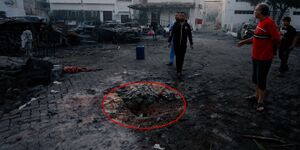


It reminded me to the fashion campaign that the brand Zara launched this year and few months afterwards they withdrew it and apologised. In this case would it could be called "the meta-choreography of war". An intertextuality of images?
Very interesting analysis! It makes me think about the "staged event" in relation to "the waltz of content", as we are being submerged with content, and so I wonder what the conditions under which the staging can be recognized? What's the role of public/reception/users in giving a status to that staging?
Firstly, it really resonates with me on a broader plane of circulation of war images on social media because lately I've been thinking a lot about the ethics of this (for clear reasons). But beyond ethics of representation, when I started reading, I immediately started thinking about documentary practices in art (and visual culture) and it felt so natural to get to a Martha Rosler reference (and made me think also of Oliver Ressler and Harun Farocki). I guess this performativity of a staged media image, immediately clashing with a war reality, and widely circulated online, is somehow exemplifying a different relationship to visual documentation - mediated by publishing technologies and ultimately rendered as content? I mean different in comparison to earlier ways in which the lens was dominating documentary discourse (in art, activism, performance etc.)
Questions: what is the role of this media choreography in the image as a document? How does the performativity of a staged, scripted reality impact the "exhibition value" of war? And how does it impact the image's status as a document? I think a reading through a Benjamin lens is interesting along the lines of the massification of images but problematised by the instrumentalisation of war images in the media. I think other than poor images, Steyerl's "Documentary Uncertainty" might be relevant?
what is authenticity? what is the value assigned by us when we name something as "authentic"? is it an aesthetical experience or experience of "truthfulness"/"believability"? is it important who shapes choreography of a picture (photographer or people on the picture/behind the picture)?
The text seems to raise the question: can it be authentic and staged intentionally at the same time? what was the intention behind the staging?
Are any images of conflict unstaged? All images are taken with the intention of 'proving' a perspective which is more or less effective/soporiphic/numbing/alarming (we can distinguish between staging by a photoprapher and staging by people in the frame)
Are any images of conflict unstaged? All images are taken with the intention of 'proving' a perspective which is more or less effective/soporiphic/numbing/alarming (we can distinguish between staging by a photoprapher and staging by people in the frame)
can we read imagined audience by analysing the image?
what does this staging do to bodies on/behind the image in contrast to more spontaneous pictures of people who are less aware of being photographed?
Blurring of content is interesting – ’click to unblur’ is a strange practice as often you are not aware what you are consenting to see
Images cannot be separated from context (as mentioned) but also the wide infrastructure - images are relational assemblages for example. Any analysis would need to include this. What metrics might be used to gage perception?


In early 2023 an unprecedented number of AI-generated images began appearing on social media, ranging from harmless and entertaining ones, like the image of the Pope wearing Balenciaga, to ones with much higher stakes, like the photo of an ‘explosion at the Pentagon’.
While the uncanniness of the pope wearing Balenciaga produced a sensory reaction, immediately awakening attention to the high likelihood of its fakeness, the ‘Pentagon event’ didn’t. The image got shared and reposted, sparking panic and causing stocks to plummet. Once the image was confirmed fake, endless articles and essays focusing on the dangers of AI-generated images began appearing online. However, it was not the image itself, but the context of the claim attached to it that drew the attention of twitter users. Arguably the documentary visual is there not to inform, but to help generate a state of panic (Steyerl, 2015).
One of the reasons for this absence of uncanny feeling when interacting with the 'Pentagon fake' is perhaps the repetitive and passive interactions with the images of catastrophic and extraordinary events in traditional and social media, of eyes that see too much -- and register nothing (Buck-Morss, 1992). The panic overtakes the senses, resulting in a lack of an acute uncanny sensation in response to images of catastrophes (real and faux), which makes the truth more vulnerable.
I would like to propose a different reading of this ‘AI event’ -- away from the techno-doom and towards a definition of new aesthetics of digital facts. In the process, I would like to highlight the role of the modes of perceiving, investigative gestures and notations as important aspects of collective sensing and sense-making (Fuller and Weizman, 2021).
The object of the controversy (the explosion) is impossible to disprove or confirm based on the image alone. Instead, further analysis of the materiality of the image, the reality it portrays, and the interactions of the image as an online artefact need to be considered.
Upon investigating the images online through reverse image searching, logging of the duplicates, comparing and collaging the original with confirmed photos of the Pentagon, most of the analyses published on twitter, focused on the glitches within the image. The researchers zoomed into high-detail fragments and outlined the boundaries of the impossible geometries they perceived (the phantasmagorias of the bending fence with its fuzzy borders, the delirious architecture of the facade of the supposed Pentagon building) with brightly coloured rectangles -- a visual record of the researcher organising the perceptual field (Goodwin, 1994).
Having the attention drawn to the framed uncanny artefacts within the original image [-->] allows one to notice the incoherent reality portrayed in the whole image: the agency and circumstance of the camera that took the photo, the strangely ordered frontal framing, the lack of movement in what one would only expect to be a chaotic scene. This detached, disembodied and neutral perspective and composition could be considered yet another way of echoing AI’s persistent erasure of bias (Steyerl, 2023).
To regain agency beyond relying on authorities of truth or resigning the trust in our ability to perceive, we can seek out a network of connections and gestures that extend from the material analysis and investigate the realities of the source image. This way we can enable a new aesthetics of fact characterised by collective sense-making, akin to a spider casting its web as an extension of its sensory field.
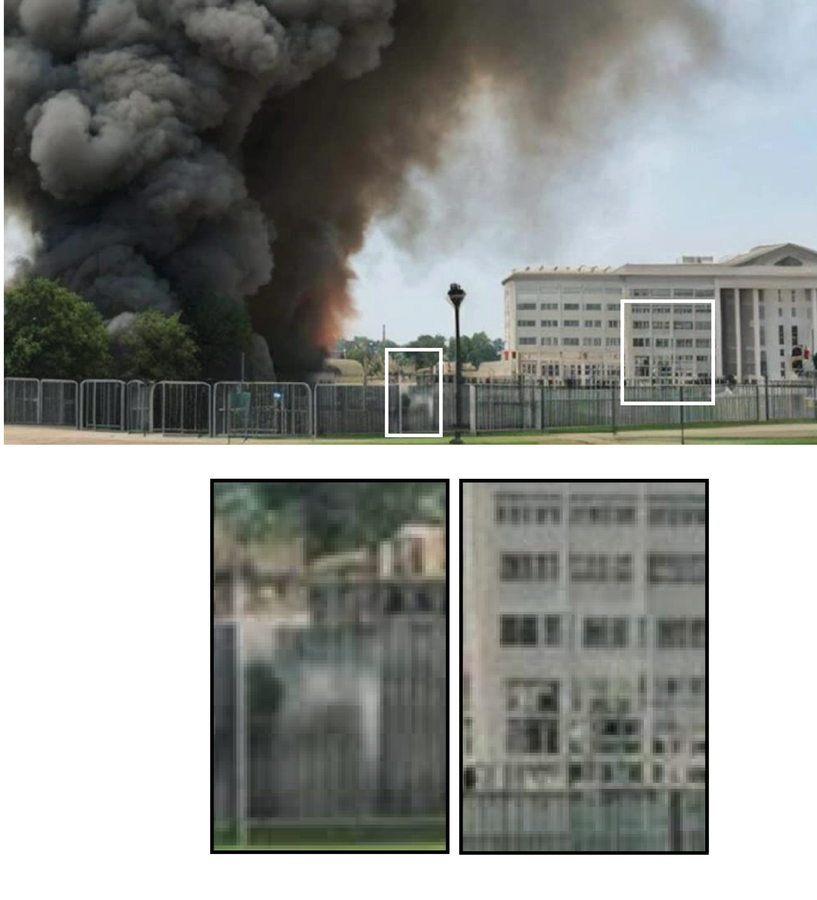
The idea of being in a 'crisis of imagination' reoccurs in other works (see: xenodataset, morphologies of flatness). How can technologies (like image or language generation by statistical modelling, for example) have an implicit imaginary within (rather than just preventing us from imagining)? Statistical modelling doesn't only prevent imagining, but also presents an infrastructuring of imagination... how are they an imaginary?
Does the fidelity of detail always correlate with the authority of "truth"?
Does (leftist) acceleration still provoke some hopes?
Dilemma is the interesting point - aesthetics/form from evidential images does not speak to the content? What do you propose as a different aesthetic?
aesthetical VS political: does analysis of regimes of perception help us understand misinformation better? or redefine misinformation? or is there another desired political result? or didactical?
The sensitivity to image changes depending on context, or proximity to portrayed events and locations. Interestingly, the misinformation was initially spread by non-US media - could familiarity of context bypass the initial indifference to the uncanny?
error: Could not open /dev/tap0: No such file or directory
I also love the term kakitocracy <3 Such an elegant way of saying what everybody thinks!
Page 11
What level of detail in simulation do we treat as realistic/evident (in case of images as evidence)? Both images and investigations of their reliability is assessment of reality (what is reality). VR simulations offer us certain ontology: what objects, physics (e.g. movement, ligh/shadow) are important enough to be matter of concern?
What assumptions are made about the real?
What is East Asian media technology? East Asia encompasses not only the geographical region but also the specific geopolitical and sociopolitical conditions in conjunction with the colonial history, technological modernity and post-Cold War structure (Chan, 2006). Adopting East Asia as a crucial framework for illustrating a situated and discursive approach, helps examine the interconnection between the assemblage of media technologies in the region and the urgency of a decolonial perspective.
In the contemporary techno-capitalist landscape characterized by heightened forms of violence operating in a new extraction and logistic system. East Asia remains a significant digital labour market. Many international corporations employ workers from Asian regions to maintain the digital systems of the platform economy. For instance, numerous repetitive online tasks (microwork), such as image tagging for machine learning on platforms like Amazon's Mechanical Turk, are outsourced to Asian workers at low pay rates. This exploitative practice perpetuates the "invisible" digital circuits and reinforces the entanglement of colonialism with techno-capitalism, as well as the power dynamics between the Global North and Global South.
The formation of technology and infrastructure, in fact, is in conjunction with our knowledge, sensibilities, and social relations, drawing from the social history of media technology in East Asia. The historical trajectory and its materialist implications, like the 1970 Osaka World Expo as a critical reference point, has refracted two key influences. One is the technological modernity through infrastructure building across East Asian cities, such as Hong Kong, Taipei and Tokyo. Another one is the experimental modes of media technology in artistic practices, reconfiguring the colonial narrative and challenging dominant infrastructures through the creative strategy.
For example, Kao Chung-li, a pioneering media artist from Taiwan who subscribes to the belief of "Historical materialism," which posits that the history of technology is dialectically intertwined with its production. Kao asserts that "the only way to redeem our history and future is to develop our own audiovisual machine; the struggle against modern enlightenment and the conclusive victory." Reflecting on this ideology, his artistic practice delves into the perception of war and image-making. Through works like Anti‧mei-ology 002 (1999), Camera Lucida Cinema (2008), Ballet Mécanique (2014), and Slideshow Cinema series (2014), he employs outdated machines and even invents his own low-budget mechanical projector using nonstandard objects. Embracing a do-it-yourself (DIY) methodology, Kao rejects technological perfection and embraces improvisation and the artistic process corresponding to the nonlinear and heterogenous modalities toward technology (Hertz, 2023). This approach allows him to navigate and bridge gaps in infrastructure, unlocking creative freedom and autonomy throughout the time of Cold War, Martial Law and the paradigm shift of capitalism and colonialism in Taiwan.

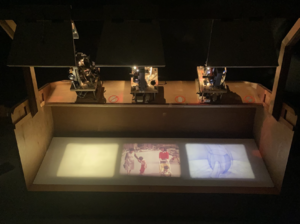
Another example is the work Rediscovery of anima (2018) by Japanese artist Akinori Goto. Goto deviates from digital and industrial technologies, instead relying on stone, wood, hemp, and sunlight to create motion infused with atmospheric elements. This media archaeological approach considers technology as a co-participant with its own agency, suggesting a conceptualization of the subject as a "tool-being." This perspective, situated along the presence-at-hand/readiness-to-hand axis (Harman, 2002), renews our relationships with material objects and enables new articulations.

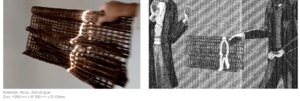
By engaging in counter-histories to mainstream media history and seeking alternative ways to comprehend the current media cultural landscape of our digital world, this article aims to contribute to a more nuanced understanding of the intricate interplay between East Asian media technologies, decolonization, and power dynamics.
Concerning the outsourced labour of micro-workers in East Asia, it would be interesting in delineating relations/similarities/differences between North America, Indian, and East Asian micro-workers.
Suggestion of further reading: Hiding this labour continues the conceptualisation of systems as fetish object/diverts accountability from the human to the gods: https://journals.sagepub.com/doi/10.1177/2053951717751552 (Algorithms as fetish: Faith and possibility in algorithmic work, 2008)
World expo as reference point for technology in post 1970s east asian nations -- is it coming from globalization?
On 12 January 2024 14:26:10 GMT, Geoff Cox wrote:
Hi all - We are assuming you noticed the wiki4print server is down – it coincided exactly with everyone trying to upload their articles for the deadline yesterday (connected maybe?). Let us know if this gets fixed, when you get a chance, thanks. Geoff et al
From: Geoff Cox
Date: Thursday, 11 January 2024 at 19.05
Yes sorry the server is down at the moment – we will fix ASAP. Obviously we are flexible with the deadline accordingly.
Everything gives me a very strange feeling. I love it when something gives me this feeling of weirdness. As Mark Fisher said: "Strangeness is an indication that the concepts and frameworks we have previously employed have become obsolete".
enamored by varied yet shallow covers of simulated comradery, slips into political indifference, its critical faculties numbed by the unrelenting surge of alluring, yet vacuous rhetoric, a situation mirroring Baudrillard's hypnotic screen appeal in "Simulacra
Page 12
A vector is a mathematical entity which consists in a series of numbers grouped together to represent another entity. Often, vectors are associated with spatial operations: the entities they represent can be either a point, or a direction. In computer science, vectors are used to represent entities known as features, measurable properties of an object (for instance, a human can be said to have features such as age, height, skin pigmentation, credit score and political leaning). Today, such representations are at the core of contemporary machine learning models, allowing a new kind of translation between the world and the computer.
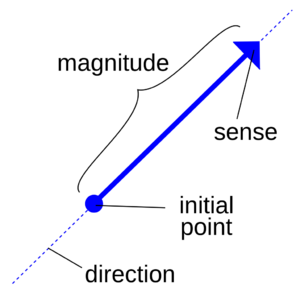
This essay sketches out some of the implications of using vectors as a way to represent non-computational entities in computational terms, like other visual mnemotechnics did in the past, by suggesting epistemological consequences in choosing a particular syntactic system over another. On one side, binary encoding allows a translation between physical phenomena and concepts, between electricity and numbers, enabling the implementation of symbolic logic in a formal and mechanical way (highlighting that truth really only is nothing more than a mathematical concept). On the other side, vectors suggest new perspectives on at least two levels: their relativity in storing (encoding) content and their locality in retrieving (decoding) content.
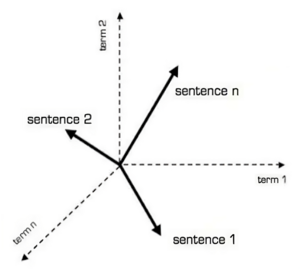
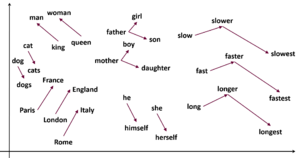
In machine learning, a vector represents the current values of the property of a given object, e.g. a human would have a value of 0 for the property "melting point", while water would have a value of non-0 for the property "melting point".
Vectors are thus always containing the potential features of the whole space in which they exist, and are more or less relatively tightly defined in terms of each other (as opposed to, say, alphabetical or cardinal ordering). The proximity, or distance, of vectors to each other is therefore essential to how we can use them to make sense. The meaning is therefore no longer created through logical combinations, but by spatial proximity in a specific semantic space. Truth moves from (binary) exactitude to (vector) approximation.
As we retrieve information stored in vectors, we therefore navigate semantic spaces. However, such a retrieval of information is only useful if it is meaningful to us; and in order to be meaningful, it navigates across vectors that are in close proximity to each other, focusing on re-configurable, (hyper-)local coherence to suggest meaningful structuring of content.

Given those the existence of features in relation to one another, and the construction of meaning through the proximity of vectors, we can see how semantic space is both malleable in storing meaning, structural in retrieving meaning, prompting questions of literacy. A next interesting inquiry is to think about the process through which this semantic space is being shaped, through the process of corporate training, and, in turn, shape us into specific communities of perceiving.
You seem to miss a lower level negotiation of how these algorithms create a fluid set of knowledges, maybe it is real to have gaps, boundaries and places where we can't match up? especially when we expand the critique beyond western thought, how do these spaces disable these voices and knowledges in a homogenisation.
I like the question „How to represent the fluidity of human knowledge creation with computation?“ The question is how to do this by using math? How to create raptures? and how to expand western thought?
if !allowed_citizenships.contains(user.citizenship):
throw new Exception()
else:
pass
I wonder how this shifts how understanding of perception? or why this way of seeing matters?
How do you see the link to Bayesian probability (not that I know much about this myself) that seem to make sense (probability) by measuring distances in variables. Or ideas of diffusion and latency. It is really valuable to (as you do) contemplate the how statistical reasoning trelate to a semantic space.
does this two modes of truth coexist?
approximations remove ambiguities
Is there the possibiliy of a lo-fi or impoverished truth?
“Simulation attempts to resemble the real, to ‘realize’ it, to bring out what is only implicit in it and make it explicit. But at a certain point in its progress it draws too close to the original, and further increases in perfection, instead of bringing the system closer to this original, only drive it further away. The system begins to reverse upon itself, gives rise to the opposite effects from those intended.” (Butler 1999: 25) (Rex, not Judith)
Curious how you would differentiate the semantic space from the latent space? I think most artists working with the vectorial conception of machine learning would more view the latent space in spatial terms as a form of sculpting - e.g. https://a-desk.org/en/tema-del-mes/latent-space-ai-art/
the quality of large language model is based on the size of the company training the model
For instance, in which space is Europe shaped into proximity with Tourism rather than with Colonialism? In which space is Technology surrounded with positive adjectives, rather than with negative co-notations?
did we buy the domain name? -yes.
Note: packages are saved by default in your user's home directory.
Subject: Re: Servpub X Transmediale
I checked the nginx error.log but it seems to be empty so it's likely the problem with the system itself. If anyone knows what the problem with the Tracker extractor is or how to deal with it please let me know.
Best,
B
The politics of The Synthetic Party is that perhaps what is produced in what Cristophe Bruno calls "the Wasteland"? ("Wasteland - Low relatedness: couples of words that are barely used in the same contexts and have very few in common. A zone from where new significations and surprises emerge (friche or jachère in french)") .... or, is it, in the end "Mainstream - High relatedness: words are strongly correlated to each others and everything is very predictable." (at the end of Mainstream you find "boredom"). ... there's a question below that asks if The Synthetic Party produces populism, and perhaps this is a way of thinking of this? That politics is perhaps caught in ether the Wasteland or the Mainstream (boredom)? (if not "Utilitarianism - low equivocation: each word has a univocal meaning and there is no place for ambiguity.")
and Simulation," where real and fake distinctions become more and more negligible, and citizens, lost in their echoed reflections, overcome the grip of political realism UNLINKING A DIMENSION of superficial diversity, seeded in lossless disillusionment,
Page 13
The pirates, in all too many cases, are not alienated proles. Nor do they represent some comfortingly distinct outside. They are us. (Adrian Johns 2009)
While the transmediale 2024 festival theme asks “how logics of content production determine and frustrate our relations to technology,” (https://transmediale.de) the research workshop “content/form” calls for an exploration of the limits of political possibilities and collective action, and urges the consideration of alternatives, especially for research practices and their tools themselves (https://aprja.net). In this context, the following text briefly comments on the work syllabus ⦚ Pirate Care (2019-2020), addressing its specific content/form of cultural piracy as usable politics and pedagogies.
Initiated in 2019 by Valeria Graziano, Marcell Mars, and Tomislav Medak, syllabus ⦚ Pirate Care serves as a transnational research project engaging activists, researchers, hackers, and artists concerned with the ‘crisis of care’ and the criminalization of solidarity in ‘neoliberal policies’ (https://pirate.care). It presents civic and artistic projects and activist practices such as “Transhackfeminism,” Soprasotto, a communing and collectivising childcare initiative in Milan, or “Sea Rescue as Care,” to name a few. The syllabus, linked to a literature repository on the shadow library Memory of the Word/Public Library, lives on a publishing platform developed in-house by Marcell Mars. Sandpoints enables collaborative writing, remixing, and maintenance of a catalogue of learning resources. The arrangement of these specific forms of ‘pirate care’ – an open curriculum linked to a shadow library, both built with free software, together with the call for collective action/disobedience – produces and distributes activities and content that can be linked back to the specific form of solidarity and (hacker) ethics that the project is concerned with. Especially regarding the questions of political writing and political publishing syllabus ⦚ Pirate Care situates itself in the political tradition of radical publishing within a new media environment (Dean et al. 2013). Mars and Medak argue that courts, constrained by viewing intellectual property through a copyright lens, have failed to reconcile the conflict between access to knowledge and fair compensation for intellectual labour. Instead, they have overwhelmingly supported the commercial interests of major copyright industries, further deepening social tensions through the commodification of knowledge[1] in the age of digital reproduction (Mars and Medak 2019). The author of Piracy. The Intellectual Property Wars from Gutenberg to Gates, Adrian Johns, writes that information has become a key commodity in the globalised economy and that piracy today goes beyond the theft of intellectual property to affect core aspects of modern culture, science, technology, authorship, policing, politics, and the very foundations of economic and social order. “That is why the topic of piracy causes the anxiety that it so evidently does” (Johns 2009, p. 26). On both ends, for the attacker and the attacked. By distributing information otherwise syllabus ⦚ Pirate Care challenges the ‘unusable politics’ (transmediale 2024) and ‘unjust laws’ (Swartz 2008) that continue to produce harmful environments, offering a reassessment of the inherently violent dynamics of the realities of Publishing (with a capital P) and the circulation of information as a commodity together with its imperialist logics of structural discrimination. The project as a model for commoning knowledge in the form of a technically informed care infrastructure not only enables its users to engage with the syllabus and library as a curriculum but also to build and maintain similar infrastructures. As an otherwise publishing infrastructure, projects like syllabus ⦚ Pirate Care continue to have an impact on politics, pedagogies, and governance and can serve as models worth to carefully ‘institute’.[2].
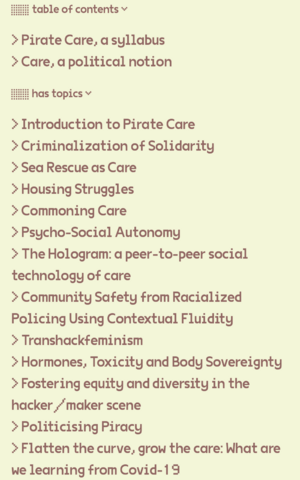
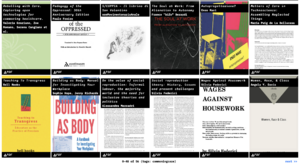

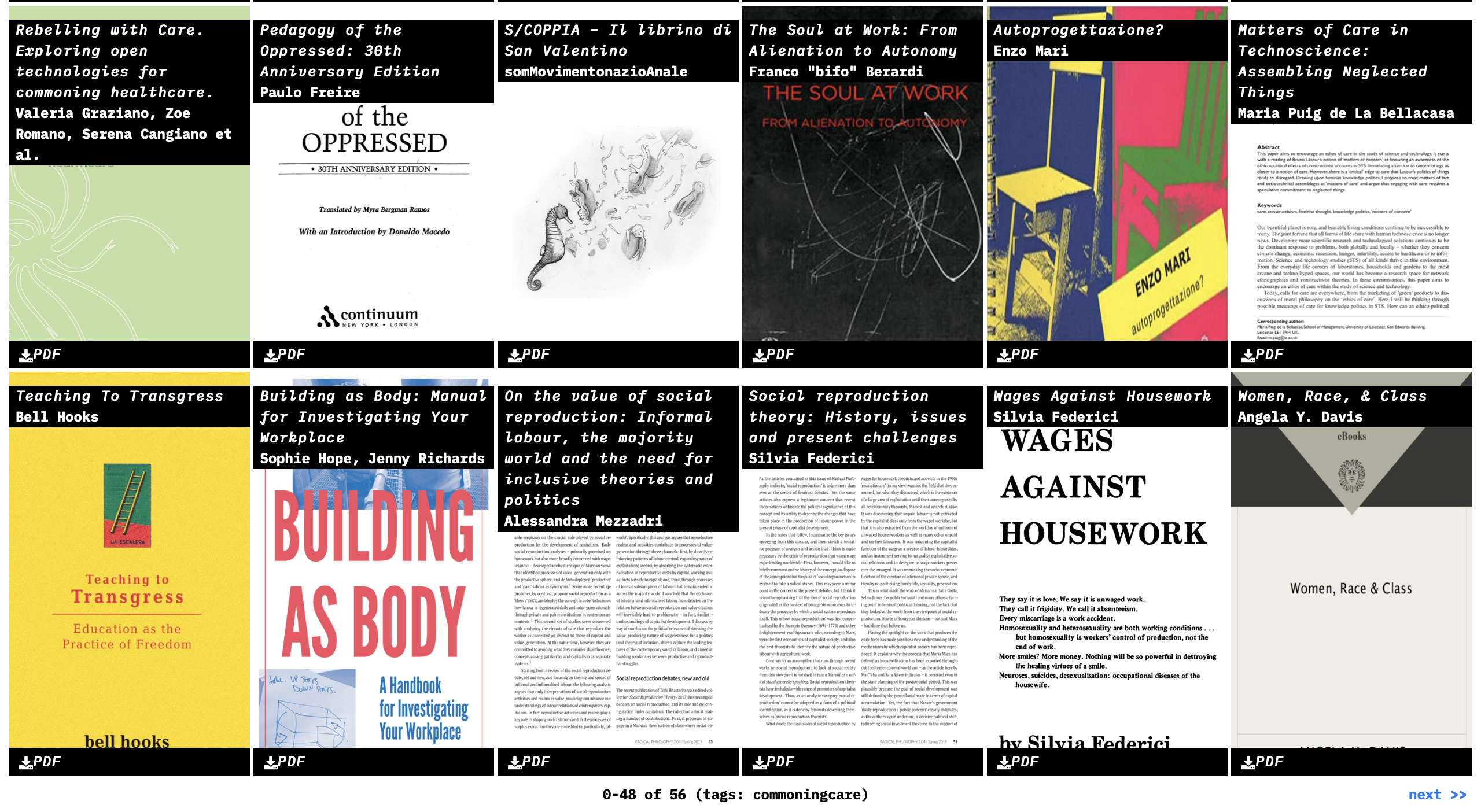
It is a a question of scalability (with reference to Anna Tsing). Is care scalable? In the big projects like sci-hub, there is more functionality and storage than explicit care concerns.
What does it mean if the “pirates” are in fact large centralisations of content (or those who maintain large collections) – e.g. ZLibrary? What systems are in place to support the use of experimental web publishing tools rather than the “big players”, i.e. Sci-Hub, LibGen, aaaarg, MOTW, ZLib et al? Thinking also of those who may be curious to use Sandpoints, but due to situation lack the entrypoint.
Olga Goriunova’s text “Uploading our libraries: the subjects of art and knowledge commons” might be a good reference. It makes me think of the librarian in relation to what OG calls a conceptual persona (with reference to Deleuze and Guattari).
You stress the “piracy” element, and how the pirated library itself mediates the invention of new socio-political forms of life. Whereas pirated libraries (and pirate librarians) are also about the failure of conventional libraries (and librarians) to preserve/build knowledge, or about the politics of memory, or about making amateur libraries (public libraries in every sense of the word).
There was an interesting point I heard in a talk about piracy in Somalia: piracy is a response to perceived exploitation (either of Somali fisheries or of academic labour, or otherwise).
I really appreciate the framing of TITiPI's arguments/questions at the end, and the emphasis on the importance of "instituting" and public infrastructure alongside piracy activism.
10.10.12.4
(wiki4print)
There's a strange relationship between The Synthetic Party's "oneliner" and the speed reader apps/the apps that promise to make us more efficient by displaying words continously - as a 'semantic space'. Perhaps look at fork bombs (espercially this one ':(){ :|:& };:' by Jaromil) as oneliners that tend to infinity, recursively replicating iteself as a DDoS attack.
but embedded as the anti-political space of El Partido Sintético, where manifolds are localized into the Euclidean territories of flat learning ... a denominator emancipating politics from ideological nuance, leveling out any articulation between represented and representative
Page 14
This workshop was convened around a carefully maintained set of networking and publishing infrastructures. Participating in the workshop we gained a privileged access to these tools, services and system's memory (which constitute a counter model of networked infrastructure). The ServPub server produces an adaptive refiguring of network infrastructure and collective presence.
Intending to invite a space for imagination and active participation in these networks, I re-purposed the widely available Wifi-enabled microcontrollers (ESP8266) to introduce a series of local-only Wifi access points, programmed to serve a simple messageboard. My interest in these particular microcontrollers stems from their functionality, offering a low-code entry level into networking devices, that also contains enough flexibility for interesting and surprising uses to emerge. The intent was for these to act as shadow networks to the primary shared server. It was intended to augment our interactions with the server and the collective writing processes. Additionally to these programmed uses it can also hold other interactions that distort the nested protocols.
Visibly, these microcontrollers break the infrastructure into further discrete nodes. More brittle than the wider network, technical capability is traded for limited parameters, that surface protocological moments into active decisions. The reduced component architecture offers some specificity of the material entanglements. We know where the memory is inscribed and under what levels of permanence. We can also follow the combination of manufacturers at least partially involved in this; Espressif, Ai-Thinker, Wemos.
Limiting this shadow network only to the dev-board without additional components or serial communications, the microcontrollers offer useful visual cues as to their possibility; from the visible printed antenna to the sometimes blinking LED. It also opens up the possibility for them to hide ever more discreetly in public spaces.
If part of our exploration of the shared server is understood in relation to conventional methods of digital networking, how does the shared server react to a smaller sibling?
In practice the shadow network remains like weeds growing at the ankles of the ServPub server. To connect to the messageboard or run other services, means disconnecting from the collective spaces of writing on the ServPub server, and the wider internet.
Something that surfaces as an immediate limit is the lack of security offered by the microcontroller. To engage with it in a sustained way requires additional agreements and discussion, emerging from the local context. So it's perhaps always unsuited for activating effective resistance to the dominant form of the internet, but could remain a possible tool for layering upon or around experimental infrastructure, such as the shared server.
It remains a possibility of actions, untaken, and affirming of the practice developed in the shared server. The shadow network follows a Luddite logic of unpicking, allowing space for refusal, the dismissal of certain processes and tools, and the exploration of others, better suited to commonality. It remains open to other passageways of data; a shadow library, a local wiki or static site. When so much is contingent on a connected internet, subject to ever greater modes of extraction, a template of autonomous zones and fragmented protocols appears as a necessary practice.
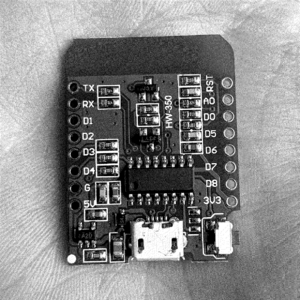
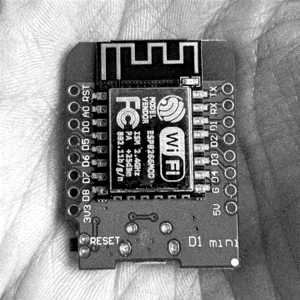
is this a (personal) experimental use of the microcontroller, or are there already groups of people who are using them to make DIY networks? and if so, what are the needs of those groups?
If we compare with radio amateurs and pirate radio, I wonder why there's relatively little experimentation with the Hertzian tales (Dunne) kind of wirelessness and wireless networks? Is it because it is harder to get into, work with, make sense than e.g. radio? And can we learn anything from the media ecologies of radio amateurs and pirate radio?
It is not secure/encrypted. Is this a deliberate decision? What can a non encrypted network offer to its users?
(by changing network, we don't have access to this pad - so definitely a sort of interference - the collective moved to the underAPRJA log)
how much are the boards? just a few euros you said.
In relation to big shadow libraries your personal library might be small scale but I like the idea of having many small libraries accessible.
thank you for reminding me of the existence of the Luddites - figures to be reckoned with in the history of technological scepticism!
It seems that we both agree in giving the imagination the responsibility to elaborate new forms for our technologies (see imagination definitions in my text). We both also apply our research to experimentation and interaction with data and software. Your experiment feels like a new way of online community.
The phrase that fascinates me most in your description is: "beyond the explicitly programmed capabilities, the microcontroller provides a vector through which other data can be passed". Does this mean that the microcontroller has some sort of agency or free will?
how does your subject domain shape relations? ethics around reconfigurations of relations?
as you comment there is a difference between this personal shadow library facilitated here and larger (platform?) shadow libraries. Here is perhaps a chance for librarians to convene - to exchange, mirror and repeat the archives.
acknowledged insecurity as a starting point for rebuilding, removing reliance on opaque or assumed secure systems. Practically they can perhaps be provide a system for public displaying which channels to switch to for secure communications if they exist.
How to rethink computational practices for future where the tools and infrastructure that we take for granted are no longer available? Is it possible to decouple the idea and practice of computing from its extractivist materiality and anglophone scope of knowledge?
The long-stablished computational tools that are so often deemed essential in contemporary society have reached the point of being perceived as natural, given realities that overlook the engineered oppression and imperialist rationale embedded in dominant hardware and software. Moreover, digital informational technologies require an ever-increasing access to data, computational power, and infrastructure that gets entrenched over the entire planet, both literally and epistemologically.
The allure of computational fetishism, with its constant promises of newer and better technologies, exacerbates the strain on our planet's resources as one of the industries with the biggest carbon footprint that are predicted to only increase (Freitag et al. 2021). Paradoxically, as society becomes more dependent on these advanced tools, users and programmers alike [3] find themselves increasingly detached from the inner workings of the machines they interact with daily. This predicament prompts a critical investigation of anti-capitalist alternatives to computation, decoupling it from big tech platformization and the commodity of the Cloud.
The central query arising from this discussion is the exploration of paths that diverge from the current computational paradigms characterized by capitalist overproduction, relentless innovation, and extractivist materiality. Rather than advocating for a simplistic return to retro-computing frameworks, the proposition is to underscore the importance of subverting, reimagining, and repurposing technology. Computers, with their complicated history, have long been entangled with harmful materiality, engineered biases, and discriminatory practices, particularly against multicultural perspectives and epistemes beyond the English-speaking West.
In response to that, there isn’t a single and universal solution, but a proliferation of alternatives. In a “prompted everything” era it can be challenging to step back and inspect the inner logics of current black-boxed devices to understand how operational systems and programming languages work to propose radical alternatives to already established paradigms. The time and hard skills involved leave out many people who can’t afford to be this critical of big tech and industry practices, turning recent concepts such as Permacomputing (Heikkilä 2020), benign computing (Raghavan 2015), Collapse Informatics (Penzenstadler et al. 2015) and related propositions [4] into a very white male-dominated, hardcore-programmer niche that flirts with purist ideologies and bourgeois romanticism (Mansoux et al. 2023).
However, it could also be argued that the populations of many global majority countries face material limitations and economic hardships that requires ingenious alternative solutions as a way to hack reality in everyday life, exemplified by Brazilian ‘gambiarras’ and Cuban ‘rikimbilis’, what researcher Ernesto Oroza names as ‘objects of necessity’ (Oroza 2006). Implementing such alternatives necessitates mundane yet crucial work that like refactoring, maintenance, care, and a calculated use of resources. (Raghavan and Hasan in de Valk, 2022) Even though these will never be as exciting and fast as today’s cutting-edge devices, they offer what might be the only long-lasting option in an increasingly exhausted planet.
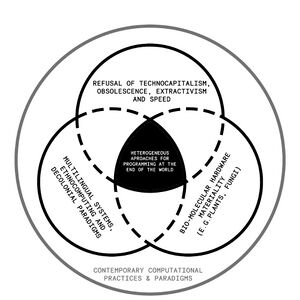
- ↑ Mars and Medak primarily refer to ‘academic publishing circuits’. See their article System of a Takedown: Control and De-commodification in the Circuits of Academic Publishing, 2019.
- ↑ In their 2022 publication Infrastructural Interactions: Survival, Resistance and Radical Care, The Institute for Technology in the Public Interest explores how big tech continues to intervene in the public realm. Therefore, TITiPI questions: „How can we attend to these shifts collectively in order to demand public data infrastructures that can act in the „public interest? And how can we institute this?“
- ↑ The categories of computer operators here is deliberately simplistic to emphasize the great hierarchical divide that permeates the majority Operational Systems (OS) in use. This approach started to be introduced back to the 1960s with the intention of promoting digital literacy and increasing the agency of users who weren’t versed in programming, giving them “access to the control panel of civilization” (Rushkoff, 2010, cited in Vee, 2013, p. 43). However, the apparent democratization of computer operations through GUIs ended up widening the disconnection between the average user and the device they operate.
- ↑ This vast proliferation of interrelated terms and definitions are being gathered and organized by artist and researcher Marloes de Valk in the ‘Damaged Earth Catalog’ (2023) as part of her PhD research project, in which the term ‘permacomputing’ stands out for its ties with permaculture principles. She also raises concerns over the lack of intersectional feminist representation in the scene. Available online at: https://damaged.bleu255.com/about/
_you do not need to be at your machine for this bit_
Most politicians only have oppinions that are sort of already allowed, e.g. on the Israel-Gaza war or the royal family. Does The Synthetic Party understand and represent the patterns of opportunistic pragmatics, or will it stay steeped in the maginal politics it was trained on?
through AI-derived policies from a dataset of fringe parties post-1970, Det Syntetiske Parti proposed a 100,000-kroner ($13K) universal basic income, tripling the mean Danish wages; and in collaboration with the tech-hub MindFuture invented the
Page 15
Discussions around the politics of refusal have already been addressed in a previous edition of transmediale 2021–22 for refusal, which resonates with the ideas here presented.
It is important to question the term 'alternative' and whether this is the most appropriate term
when proposing a new logic/norm, as this still acts within a binary logic that reduces the object of discussion to either being part of the 'norm' or the 'alternative'.
As Donna Haraway advised in Staying with the Trouble, the solution may not be a solution in itself. Rather, we can use the problem as a compost (here I imagine technological 'cagadas' literally translated as 'technological turds' which means 'technological screw-ups') to plant new forms of affect.
There are already several works within esoteric programming languages as a form to question the pervasiveness of English and Western epistemes in computational systems. Here's a non-exhaustive list of contemporary esolangs exploring the multiplicity of natural languages and questioning the embedded politics of the tools we code with:
- Cree# by Jon Corbett.
- 文言 (Wenyan-lang) by Lingdong Huang.
- قلب (Qalb) by Ramsey Nasser.
- Prāsa by Koundinya Dhulipalla.
- Programmoire by Batool Desouky.
The part of technical proficiency is also an interesting one to investigate: doesn't it act as a barrier to decentralize/produce alternative infrastructures? Do those decentralized infrastructures require everyone to 'learn to code' (if only a little bit) in order to maintain and care for these infrastructures?
Interoperability is also an interesting question to me: does decentralization without interoperability risk becoming a sort of 'silo-ing' of communities and practices?
The figurations of positioniality, nascent research as vulnerable, malleable forms of discursive material ready for communal remix, moulding, seeding and minor mirror transgressions.
The workshop as an event lingering on public presentation and confessional vulnerabilities as the presenter stakes their claim within the micro-network of co-presenters and designated mediator ( stone cold sober and ready to gather and collate the disparate-yet-connected FORM_CONtent flows of ordered consciousness).
Hyperconnected, metadata doubling, linking, shrinking and contributions ripe for comments and walled entry points to transmutability. Syntax stories and In-the-grid building of sensational alter_otherWise infrastructures.
Constraints, Monday unpicking, rotating of entry points and the presence of an omnipresent server that loyally yet fallibly serves and yet is served tenderly by the group. Parasitical infrastructures promising to provide more equitable frameworks for the transmission of research artefacts within nostalgic DIWO logics of burning desires for the collective dynamic to manifest.
Sustainable. Research. Practices. This triad of convulsive impulses refuse the REFable immutable objects of academic prestige and in the same breath promise to sprint and collectively assemble towards the NEWSpaper thin space of collapse. Positing. Countering/ regimes of academic publishing, triangulating the work-in-process, the half cooked or malformed thoughts built upon thoughts, theories of theory and the logging and hoarding of systems of alliance and emancipation away from dominant knowledge production and hidden hierarchical systems of review. Feels fresh, feels less than formulaic.
The comments are the body, the embodiment, the entities of research in full apologetic yet generative performance, or under sets of radical constraints that convulsively produce produce produce.
The print, the imprint, the matter of print, or print that matters ... other or more than formulaic dissemination. Form as/through/with content.
The sharing of the organisational space is rarely equitable but the collective of collectives, the burning holes in the discomfort of distributed tendencies may shine through. Conversations that become served by servers, familial collective voices that merge into one that are then almost immediately spun through the distributed impulse of relinquishing sole ownership and loosely holding narratives as public access, public property, through albeit hidden mole runs of labour hiding in the shadows as the pathways to generative spaces of publication begin to circle through their own logics of emergence.
Research as mutable object of availability, as fragile artefacts of high stakes demand. The opening and closing of accounts, as modes of modulated access and distribution as form once again takes a grip over content. Building upon buildings. Structures upon structures. Where should our scattered and disparate attention be lodged, is there a fixed abode for reconciling disengaging from hardware dominance, proprietary and finding structures of referral and commentary through the acceptance that Form as Content credits all but none. A deeper accreditation, a fixed acceptance that there is no address, to frame this research in motion?
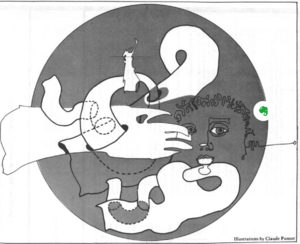
Tinc: mount the 2nd Pi (50 mins) - George - b200l + kt = chaos
Subject: Re: wiki2print
I think the wiki2print is now publicly online: https://wiki2print.servpub.net/ horray ❤️ ❤️ thanks to Ingrid n Systerserver + Varia.
From: Christian Ulrik Andersen
Date: Thursday, 25 January 2024 at 16.07
... Importantly, our wiki4print is running in a pi, which in-grid will bring from London to Berlin on Sunday. So, be aware that it will not be running whilst being moved.
See you all on Monday in Berlin!
I do actually like the idea of the SDG "Life with Artificials"!
18th UN SDG “Life with Artificials”; so with its measly 11 signatures out of the requisite 20,000 to run for Danish parliament, the party keeps alive worldwide networking about creating localized Synthetische Partei duplicates.
Page 16
CONTRIBUTORS
Anya Shchetvina is a PhD Fellow in an interdisciplinary research group "Kleine Formen“ (Microforms) at Humboldt University of Berlin.
Asker Bryld Staunæs is a practice-based PhD researcher at Aarhus University and Kunsthal Aarhus.
Batool Desouky is part of the In-grid collective. They are also a computational artist and Associate Lecturer at Creative Computing Institute (CCI)
Bilyana Palankasova is a curatorial researcher, currently a PhD candidate in Information Studies at the University of Glasgow.
Christian Ulrik Andersen is associate professor at Department of Digital Design & Information Studies, Aarhus University, and research fellow at Aarhus Institute of Advanced Studies (AIAS).
Denise Helene Sumi is a curator, editor, doctoral researcher at the Peter Weibel Institute for Digital Cultures at the University of Applied Arts in Vienna.
Duncan Paterson is a Computational Artist and PhD researcher at the Creative Computing Institute at University of the Arts, London.
Edoardo Biscossi is a PhD candidate at the Department of Humanities and Social Sciences at the University of Naples l’Orientale, and also a freelance researcher, writer, and creative strategist.
Emilie Sin Yi Choi is a PhD candidate at the School of Creative Media, the City University of Hong Kong, and also board member of the media art organization Videotage.
Esther Rizo-Casado is an artist, digital designer and doctoral researcher at Complutense University of Madrid, and member of the technopolitical collective Xenovisual Studies.
Geoff Cox is Professor of Art and Computational Culture at London South Bank University, and co-director of Centre for the Study of the Networked Image (CSNI).
George Simms is member of the In-grid collective. They are also a PhD and lecturer at i-DAT university of Plymouth, with their research focusing on queer and crip methods towards collective infrastruturing and knowledge creation.
Katie Tindle is a member of the In-grid collective, an artist/educator/facilitator and lecturer at Goldsmiths, University of London.
Kendal Beynon is a Rotterdam-based artist and PhD researcher at CSNI in partnership with The Photographers’ Gallery, London.
Luca Cacini is an artist, designer, and researcher for AIxDESIGN, currently pursuing a Master’s degree in Media Arts and Cultures at UWK, Aalborg University, and University of Lodz.
Maja Bak Herrie is postdoc at School of Communication and Culture, Aarhus University.
Manetta Berends is an educator at XPUB and peer at Creative Crowds (cc) and PrePostPrint.
Mariana Marangoni is a Brazilian artist, researcher, and educator based in London, currently a PhD Candidate at UAL Creative Computing Institute and Lecturer in Software Studies at Camberwell College of Arts.
Marie Naja Lauritzen Dias is a PhD candidate at School of Communication and Culture, Aarhus University.
Mara Karagianni is part of the Systerserver collective.
Martyna Marciniak is a Berlin-based Polish artist/researcher working independently and in collaboration with NGOs such as Amnesty International and Human Rights Watch.
Mateus Domingos is an artist and PhD researcher at CSNI, London South Bank University.
ooooo is part of the Systerserver collective.
Pablo Velasco is associate professor at Department of Digital Design & Information Studies, Aarhus University.
Pierre Depaz is a programmer, artist, doctoral student at Paris-3, and a Lecturer of Interactive Media at NYU Berlin.
Rachel Falconer is an independent curator and Head of Digital Arts Computing at Goldsmiths University of London, and PhD researcher at CSNI and Whitechapel Gallery, London.
Rebecca Aston is part of the In-grid collective, is an artist/technologist/educator, and is the co-head of the MA/MFA in Computational Arts at Goldsmiths University of London.
Simon Browne is a researcher, designer, experimental publisher and member of the collectives Varia and OSP (Open Source Publishing) and a peer at Creative Crowds (cc).
Søren Pold is associate professor at Department of Digital Design & Information Studies, Aarhus University.
Sunni Liao is part of the In-grid collective.
Winnie Soon is a Hong Kong-born artist coder and researcher, and associate professor at The Slade School of Fine Art, University College London.
The list of contributors is contentious - whether to list names at all, if so, in what order, and how to register the collectivity that underpins our work, as well as resist the academic reputation economy. It exists in compromised form.
As a festival, we are dedicated to asking critical questions about technology and providing a dynamic space dedicated to debate and understanding. Our attention centres on artists' work and their practices. We do not involve ourselves in monitoring any artist’s social media or political affiliations. Consistent with this approach, long ago, we withdrew from select social media platforms such as Facebook, Instagram, and X (formerly Twitter). transmediale is committed to providing a festival that is a safe and inclusive space for everyone, and to do so, we maintain a zero-tolerance policy towards all forms of discrimination and racism, including antisemitism and anti-Muslim racism. Safeguarding a free and respectful space for dialogue, openness, and exchange is our priority and responsibility. As a cultural institution, we steadfastly believe in the power of art and culture to create valuable spaces for encounters, reflection, and even change. We are dedicated to keeping these spaces open and fostering forums where differences can be discussed and navigated with mutual respect. We call for solidarity between all cultural actors at a time when further fragmentation and distraction from collective aims only make us weaker.
Extract from transmediale’s statement: “Update On the Berlin Senate’s Anti-Discrimination Clause and Artist Withdrawals,” (2024), https://transmediale.de/en/2024/news/transmediale-2024-update
Exploring the horror of content, the 37th edition of transmediale questions how logics of content production determine and frustrate our relations to technology. It challenges the allure of unusable politics that spawn from cycles of consumption and distraction.
From: Simon Browne
Date: Monday, 15 January 2024 at 12.10
Dear Geoff, Christian & Winnie,
Manetta (cc'd) and I have been exploring printer options for the upcoming newspaper sprint and we have a very reasonable offer from a newspaper printer in Berlin (attached with this email – interesting side-note: they still use some machines from the DDR): https://www.berliner-zeitungsdruck.de/.
The traditional Berliner format (315x470mm) and printer are a nice choice as they allow us to work with a materiality that is already present within the context of Berlin. We are thinking of printing 16 pages in one colour, most likely black, and the offer is for 2000 copies delivered to HKW in the early evening of February 2nd.Please let us know your thoughts. We would like to accept the offer by Wednesday and ask the printer to invoice us this week.
All my best,
Simon
Subject: Re: Servpub X Transmediale
Okay I've had a look at the syslog, last process in it before it crashed is The Tracker extractor which seems to be a bug that others have had issues with.
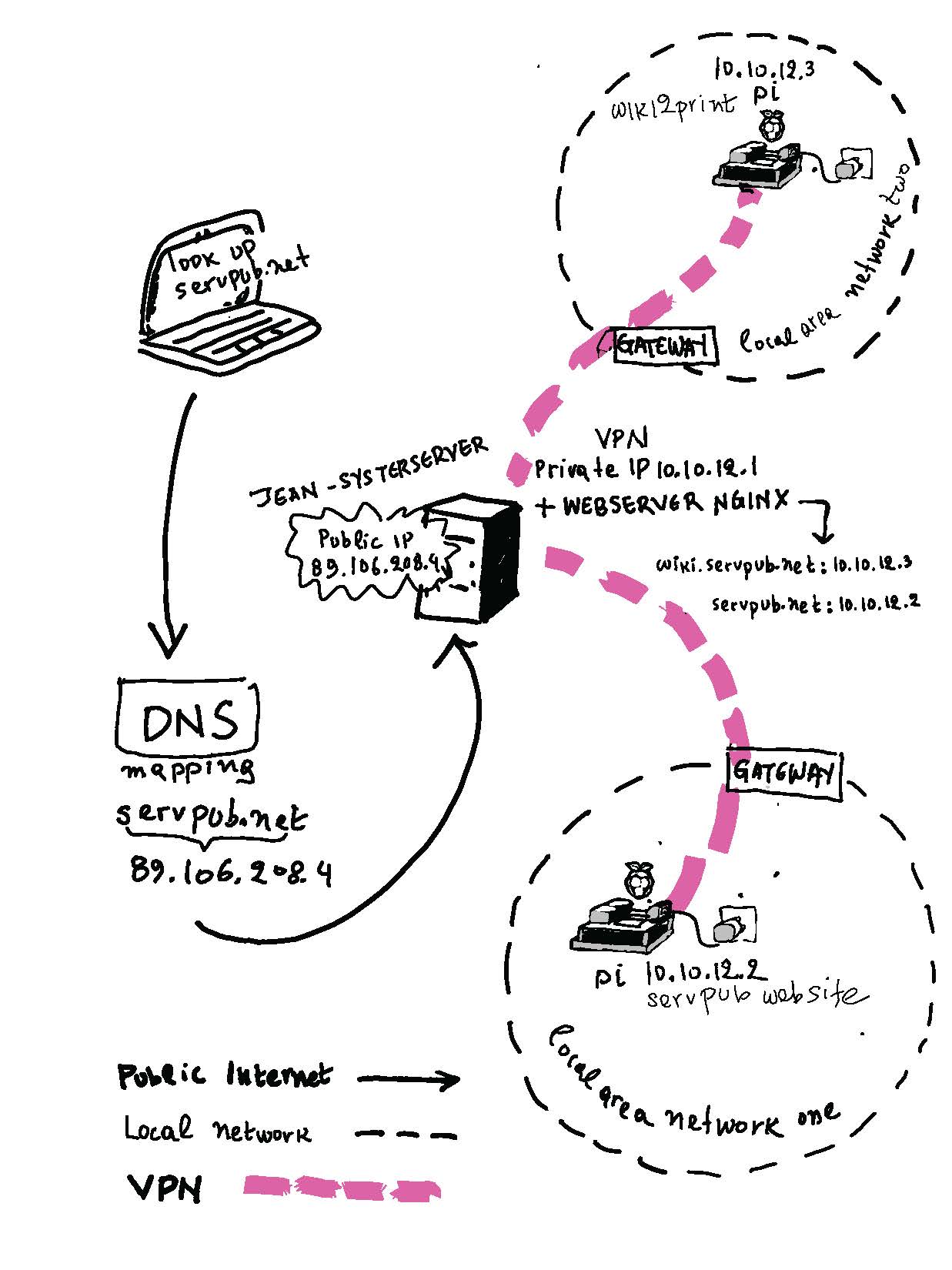
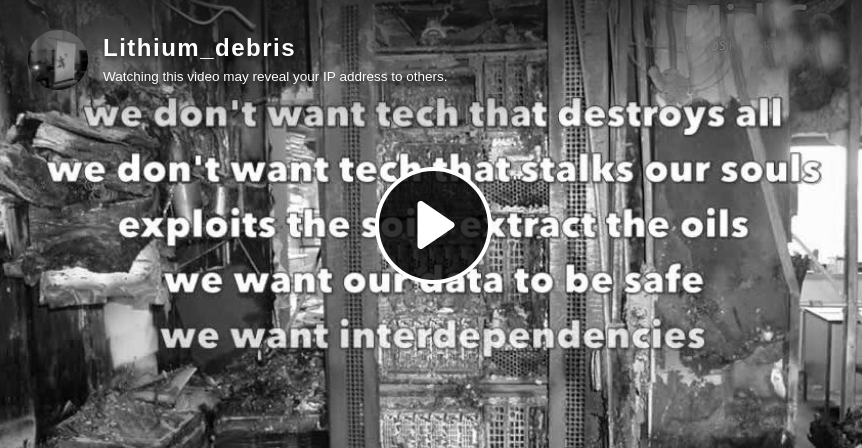

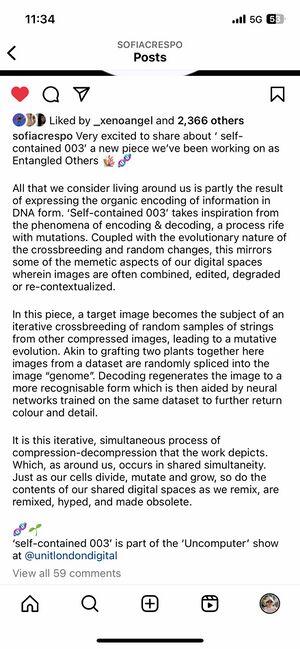

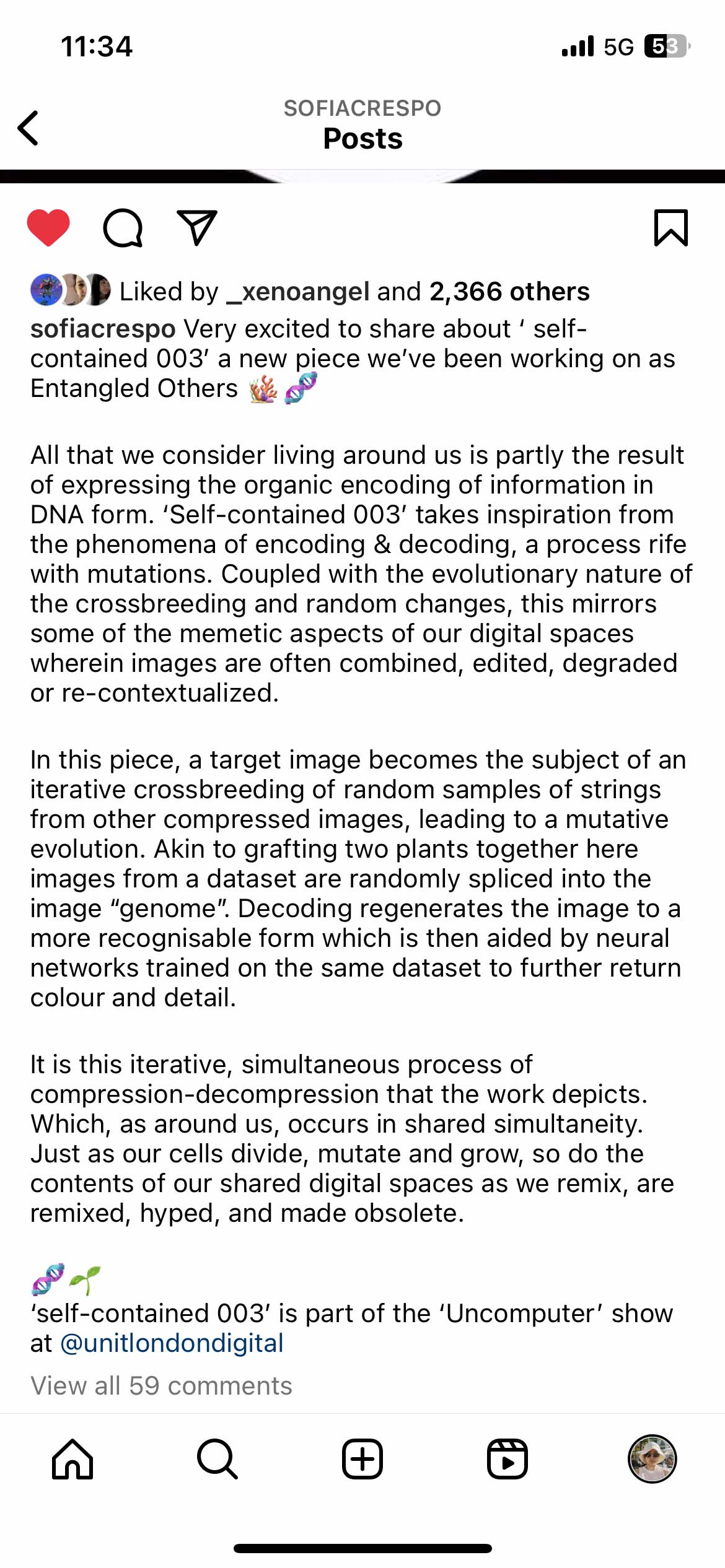

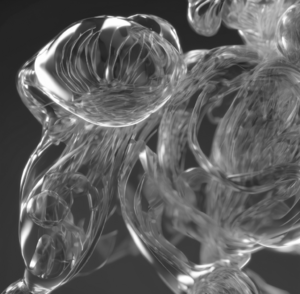

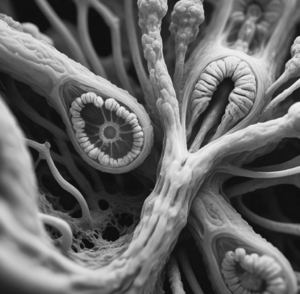
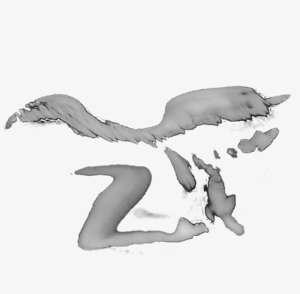
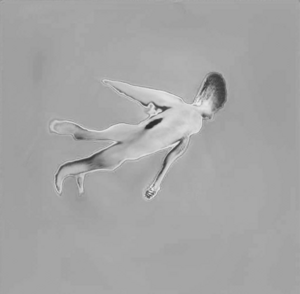

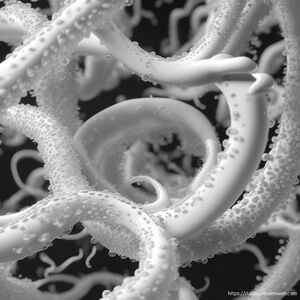
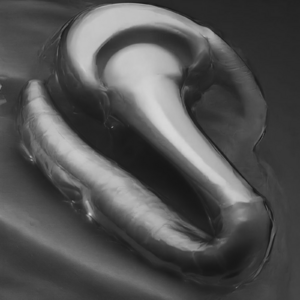
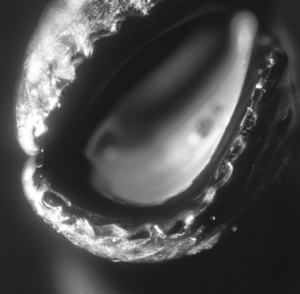
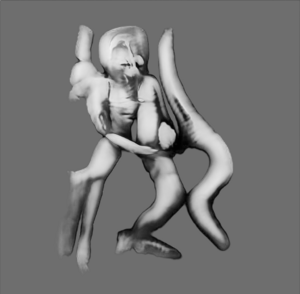
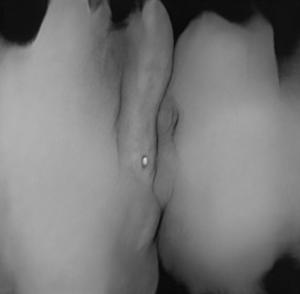
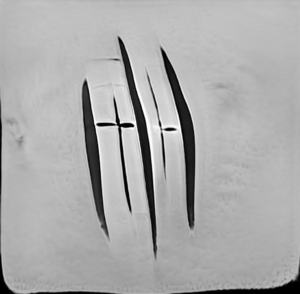
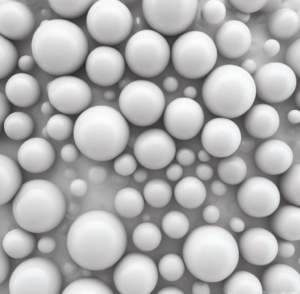
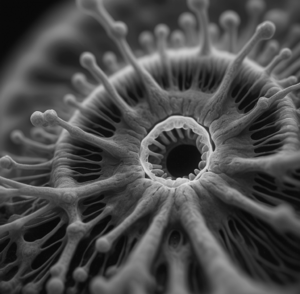



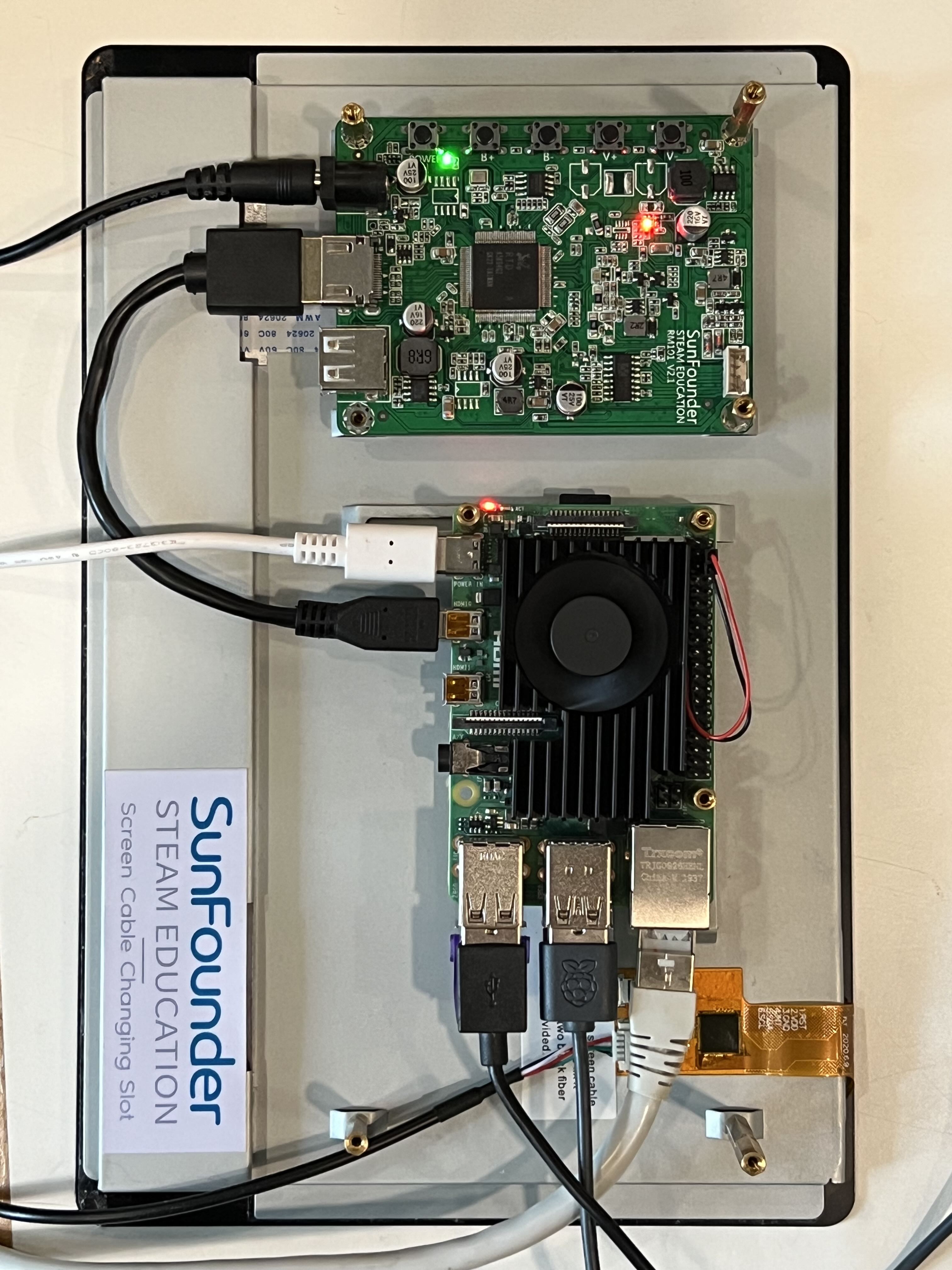






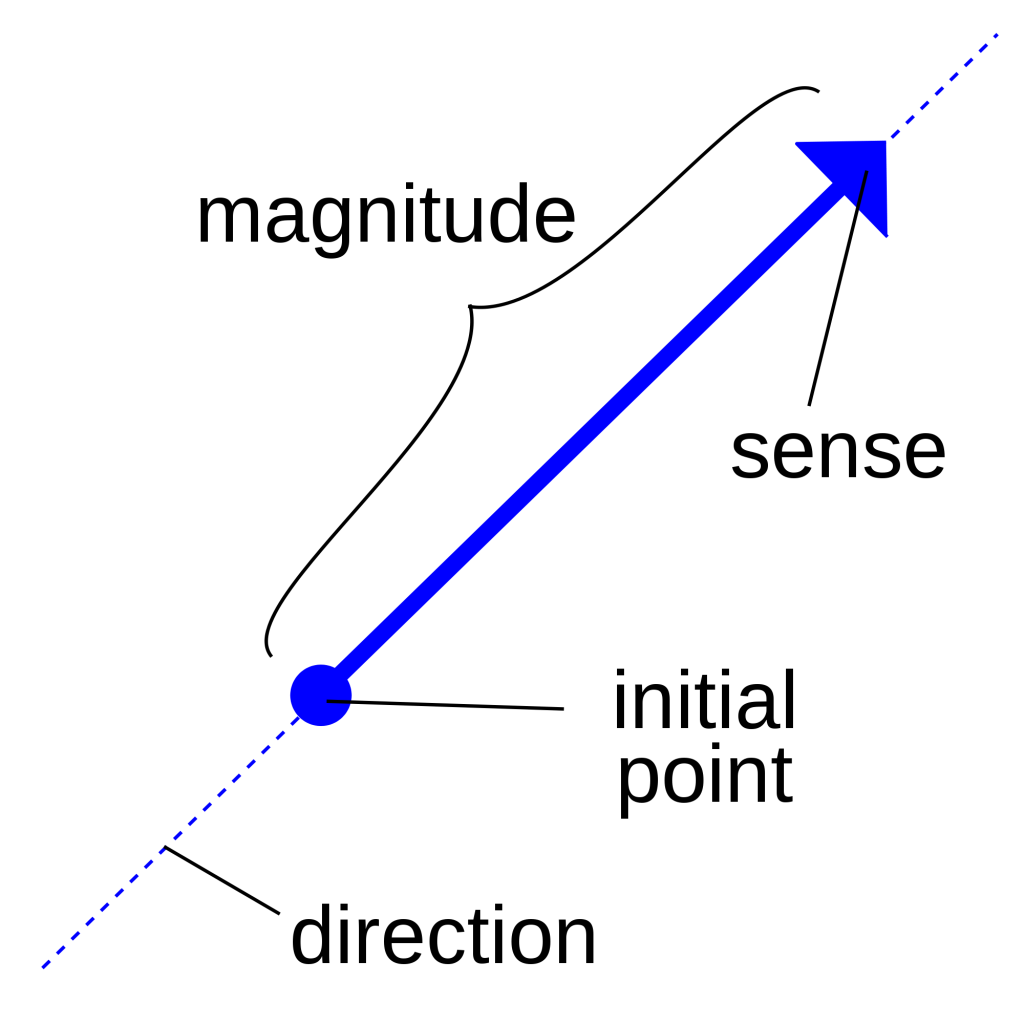
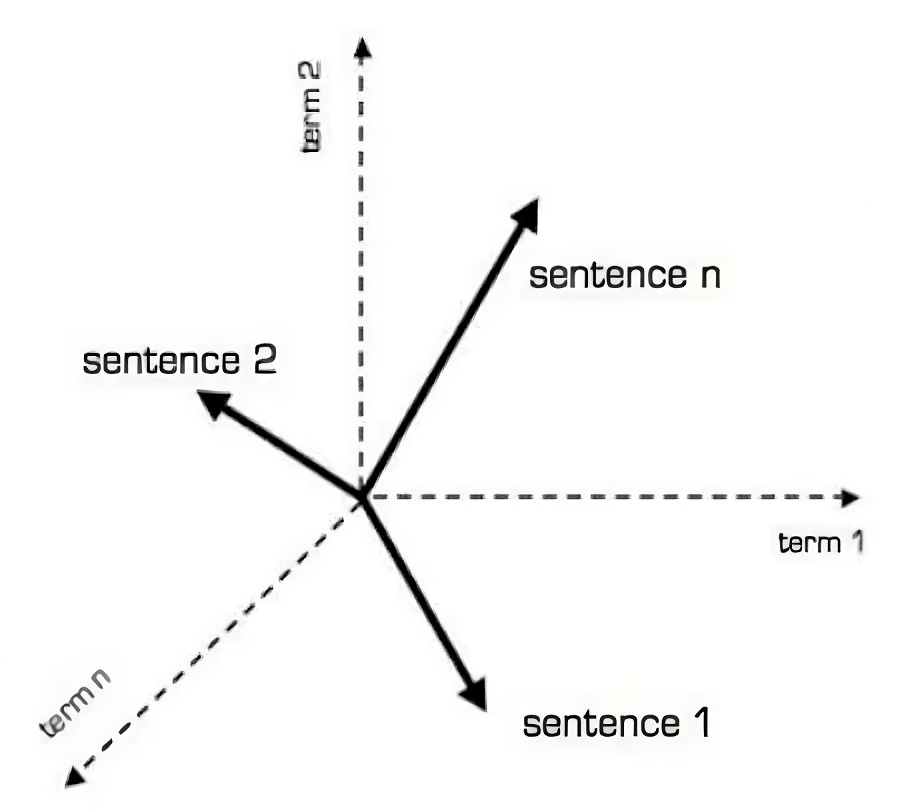
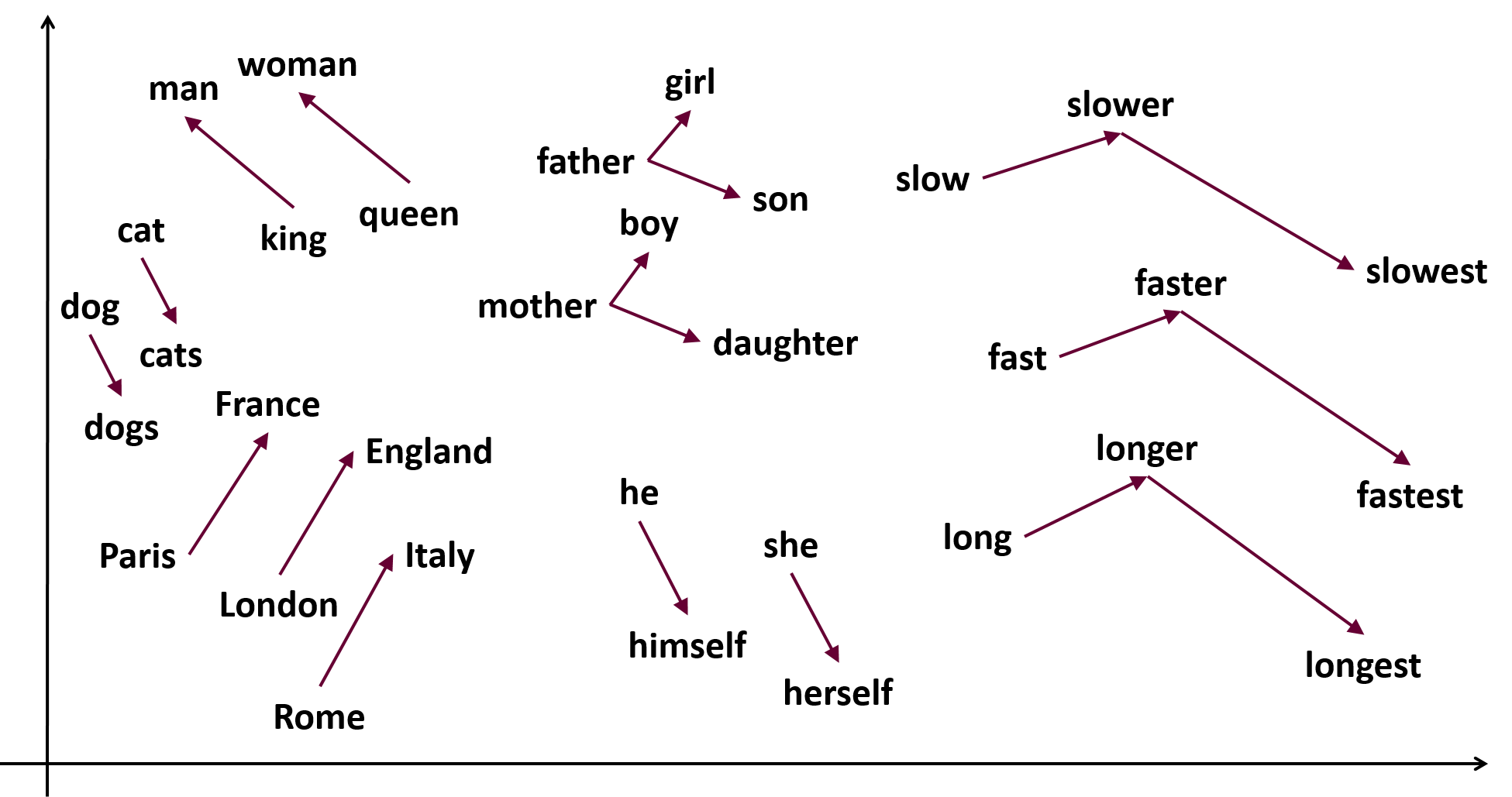

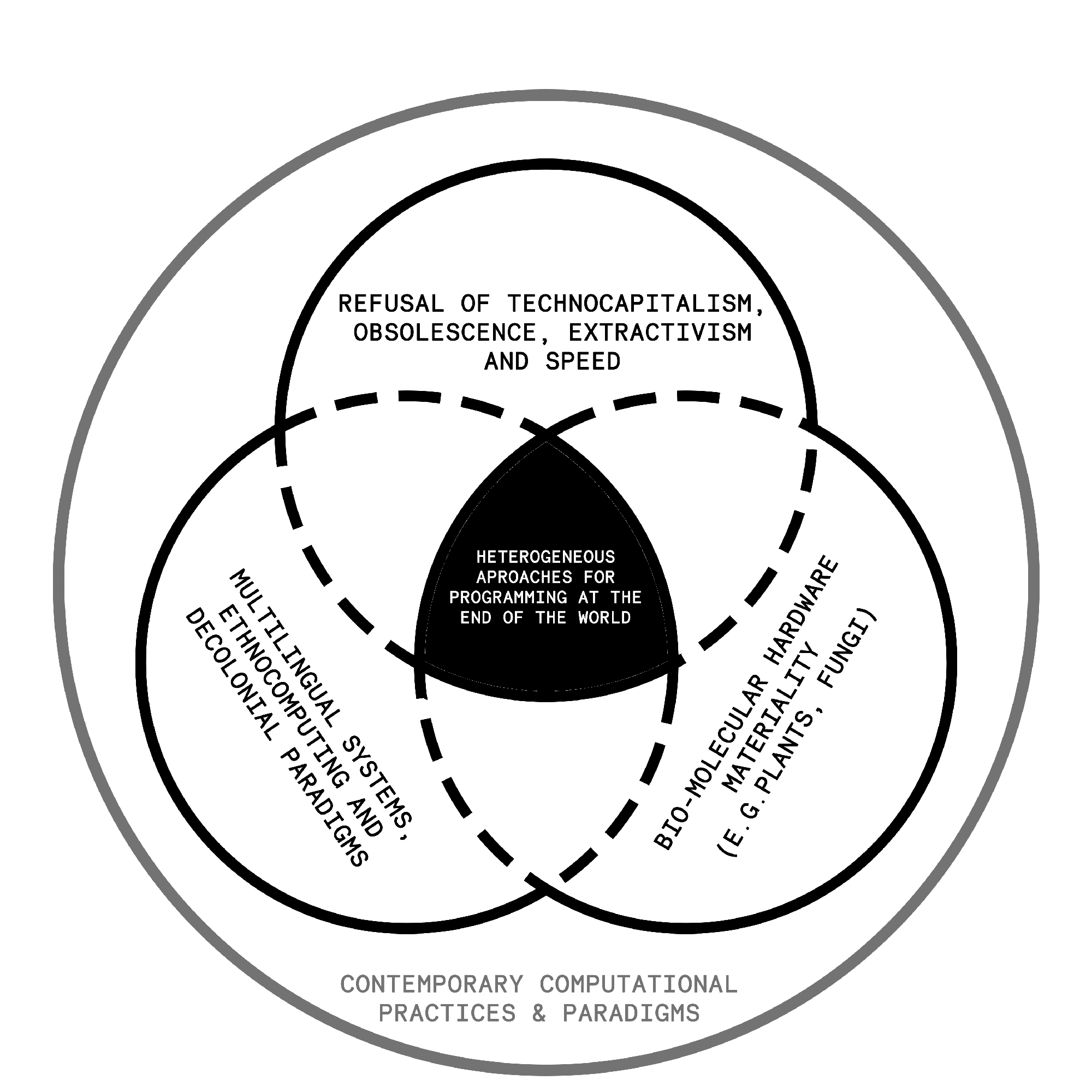
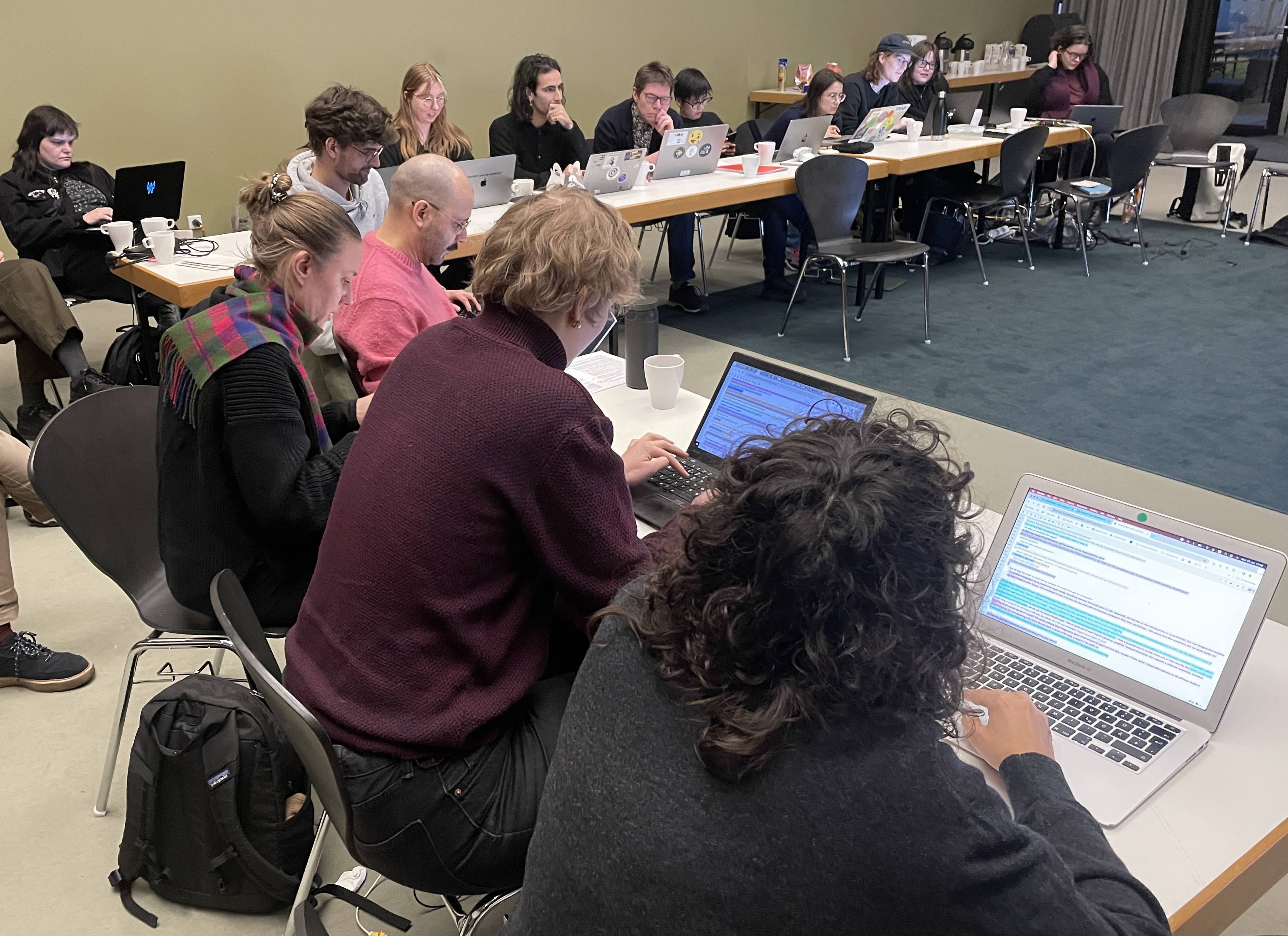
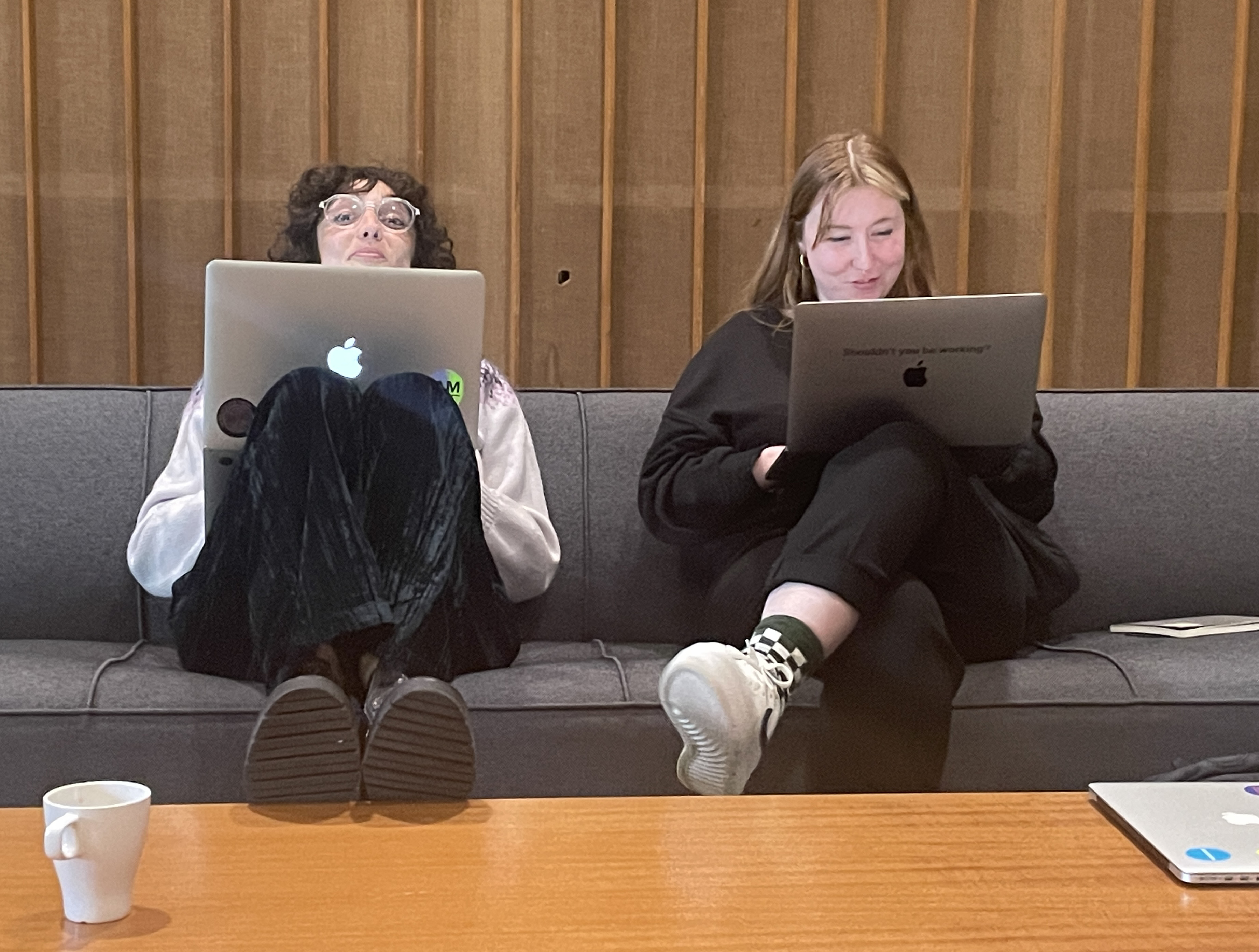





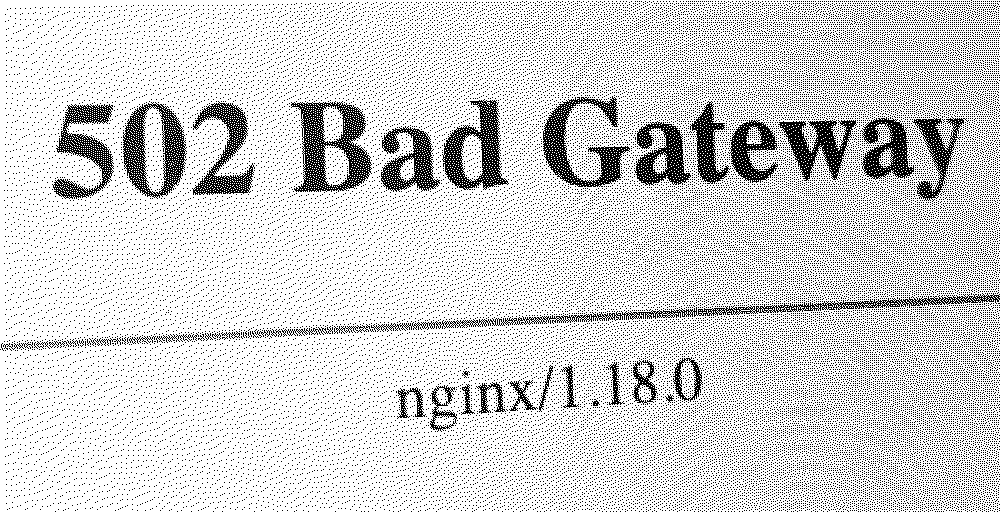
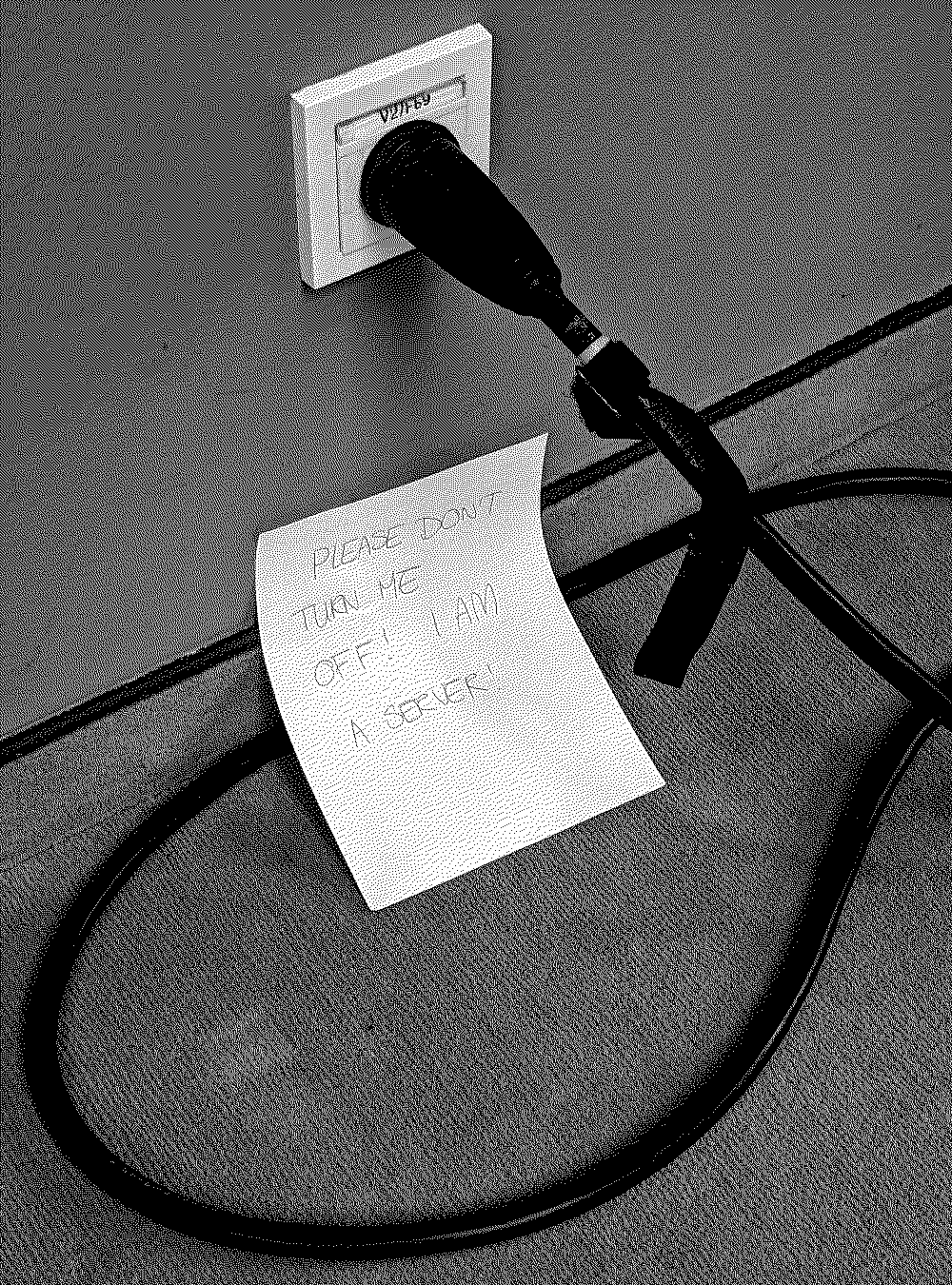
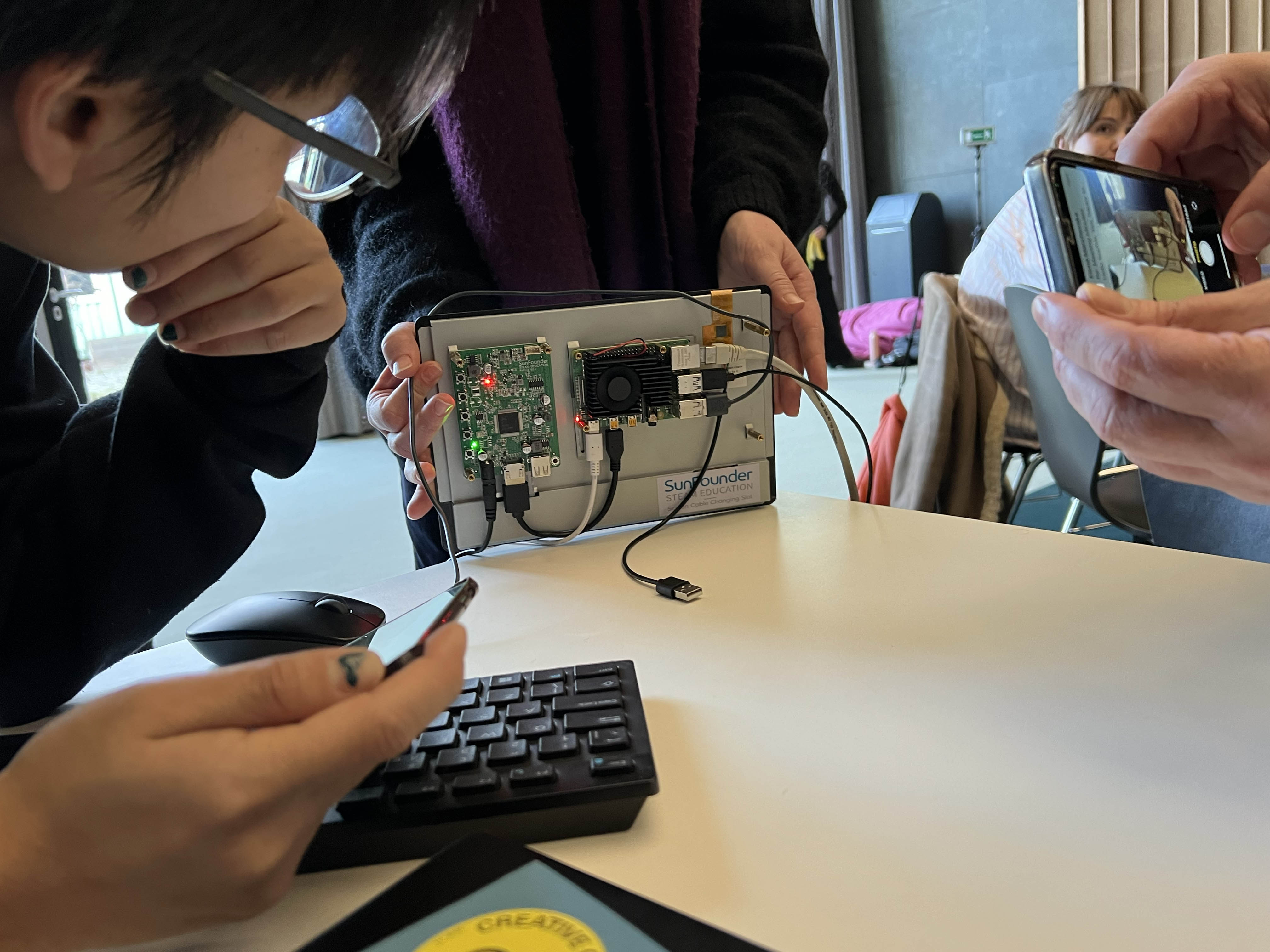
These questions have also been explored in previous issues of the newspaper, for instance in vol. 12 on Minor Tech where the minor is a relative position to major (or big) tech, and operates at human scale (more peer to peer than server-client). Or in vol. 11 on Rendering Research which explores how the rendering of research (giving it form and content) reinforce certain limitations of thought and action.